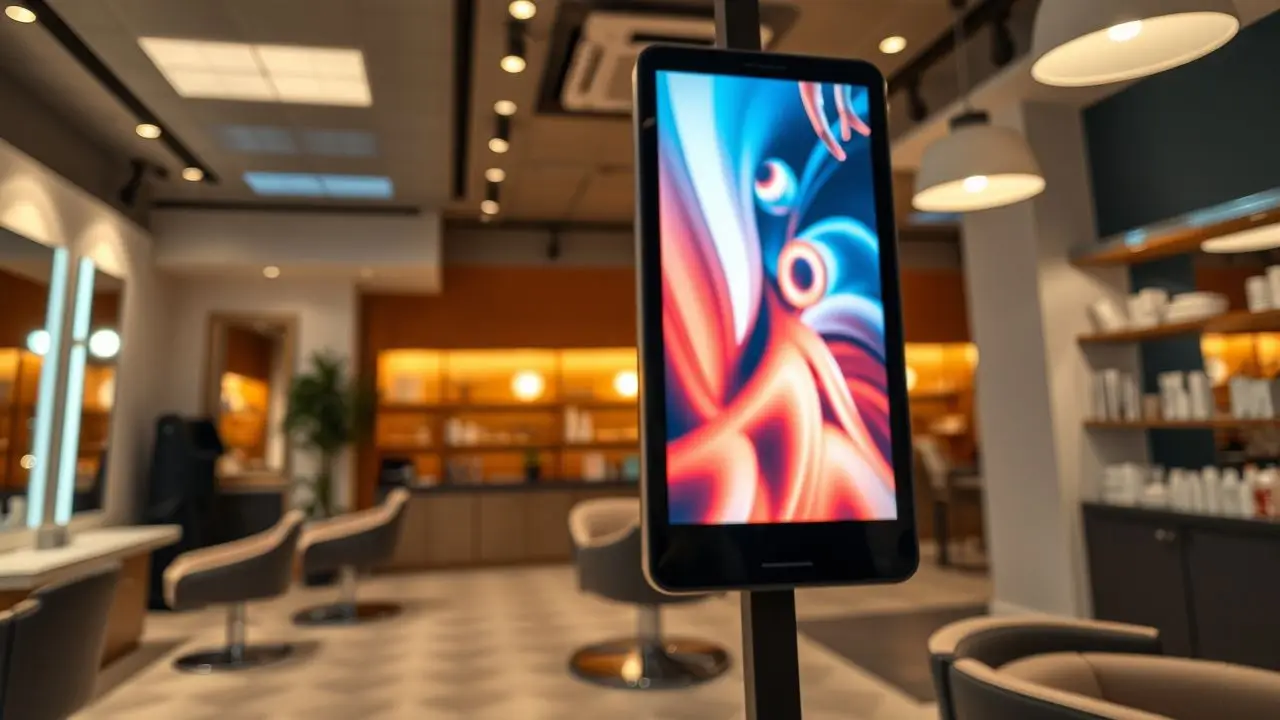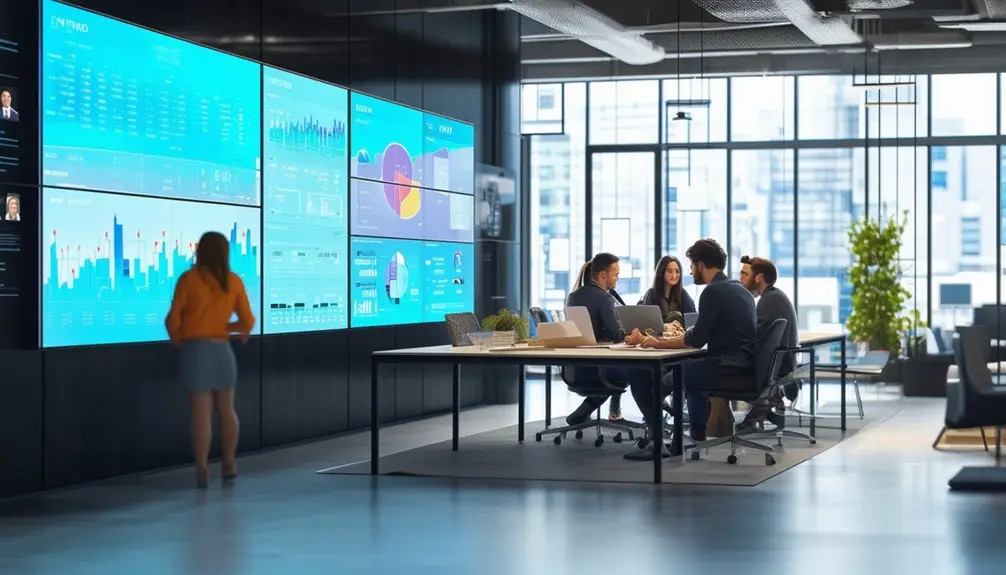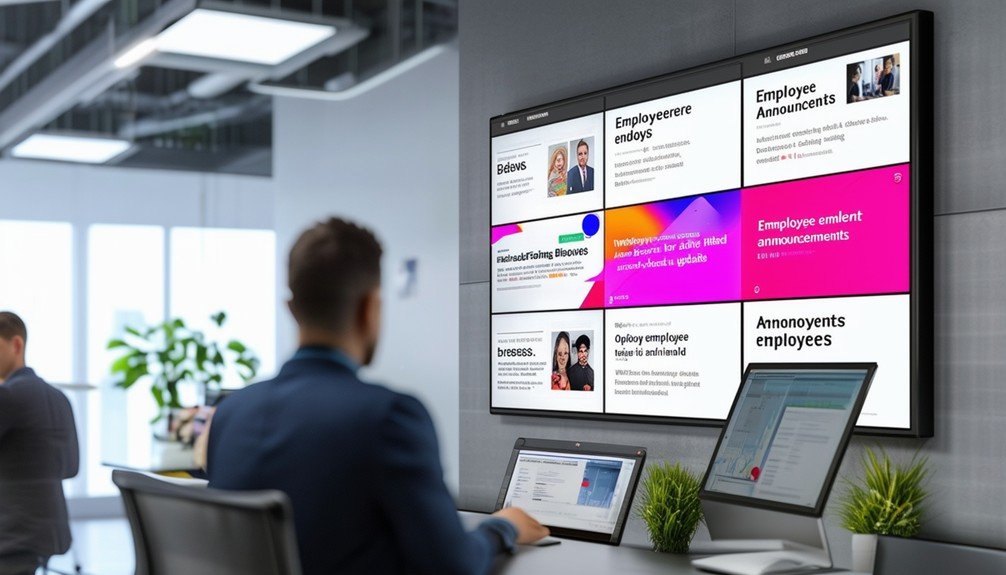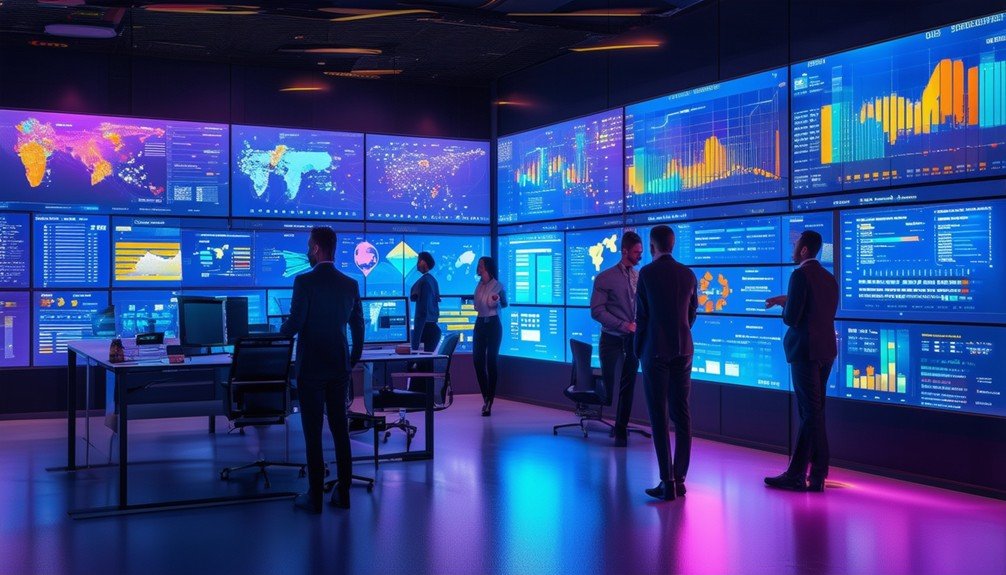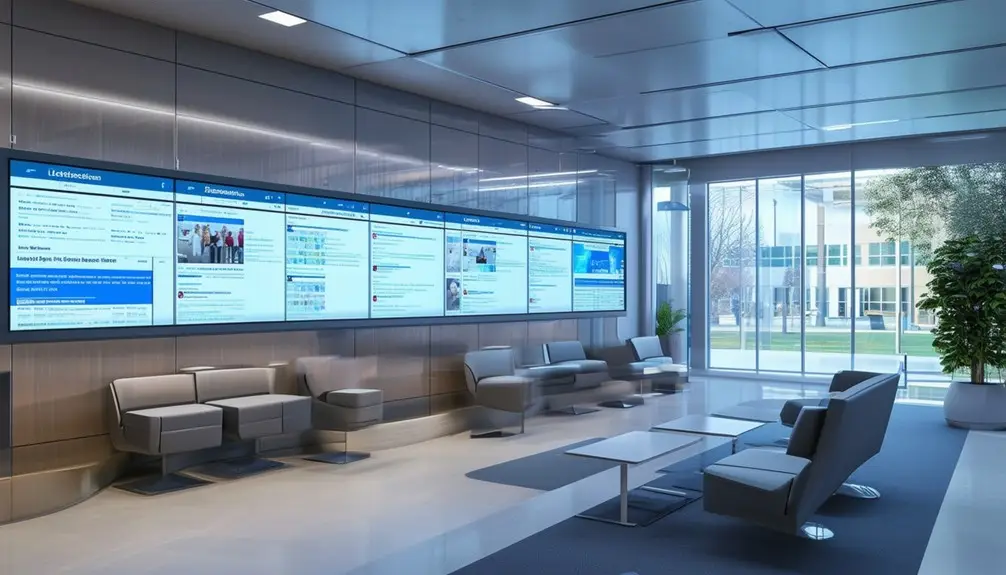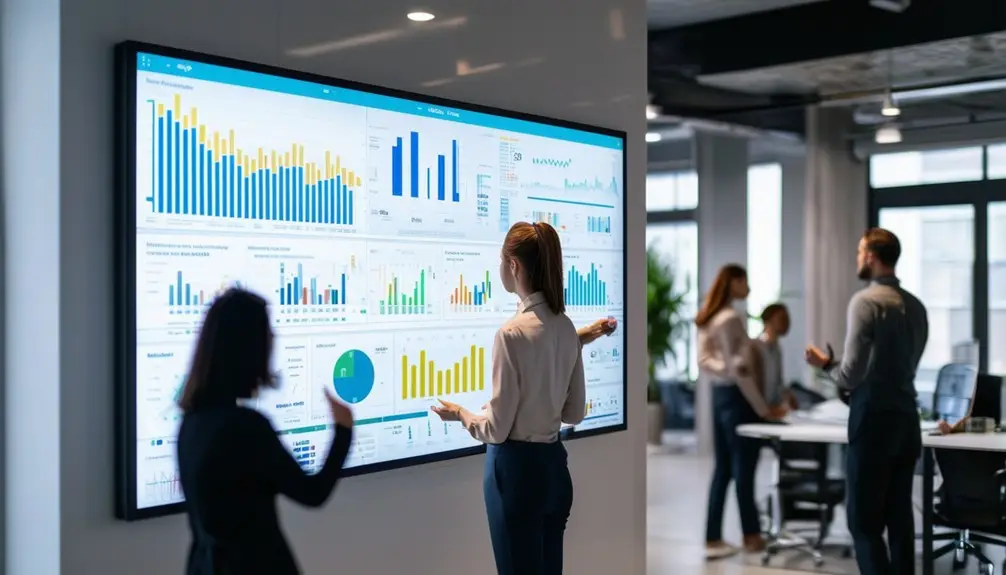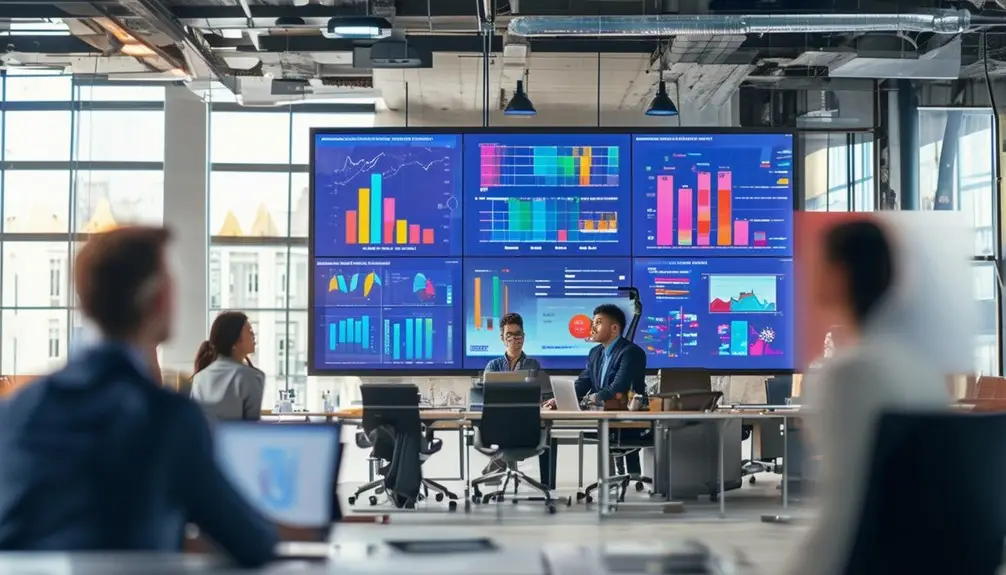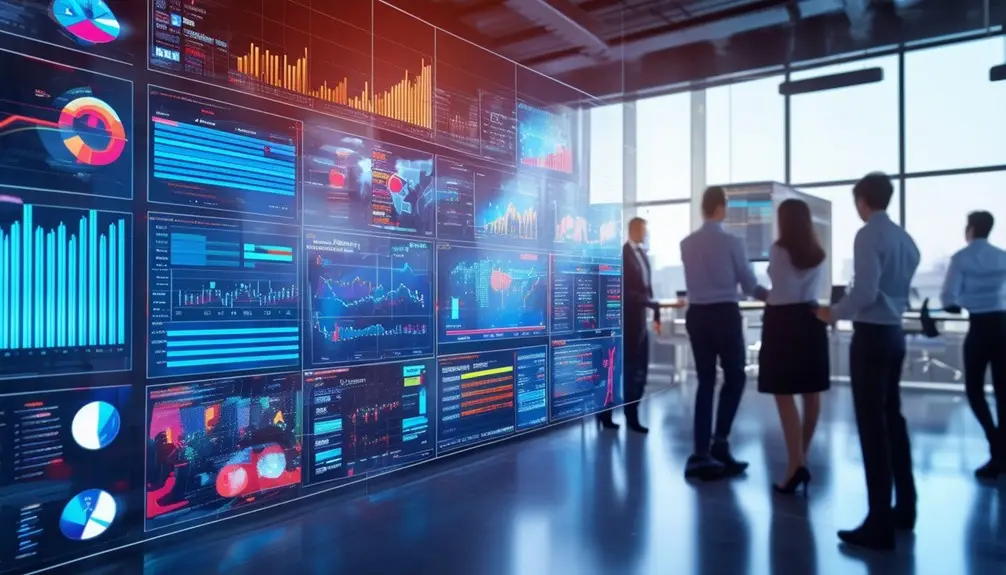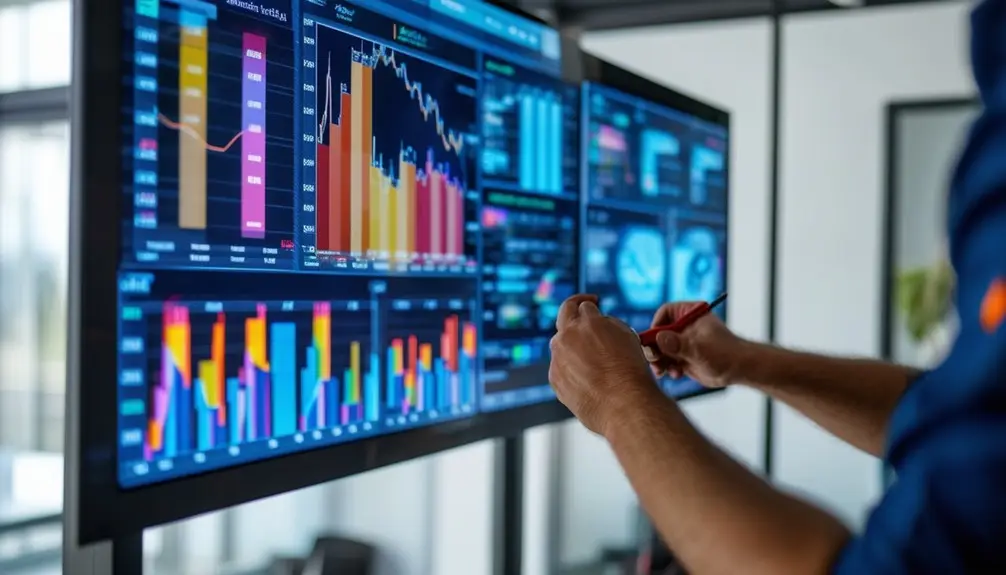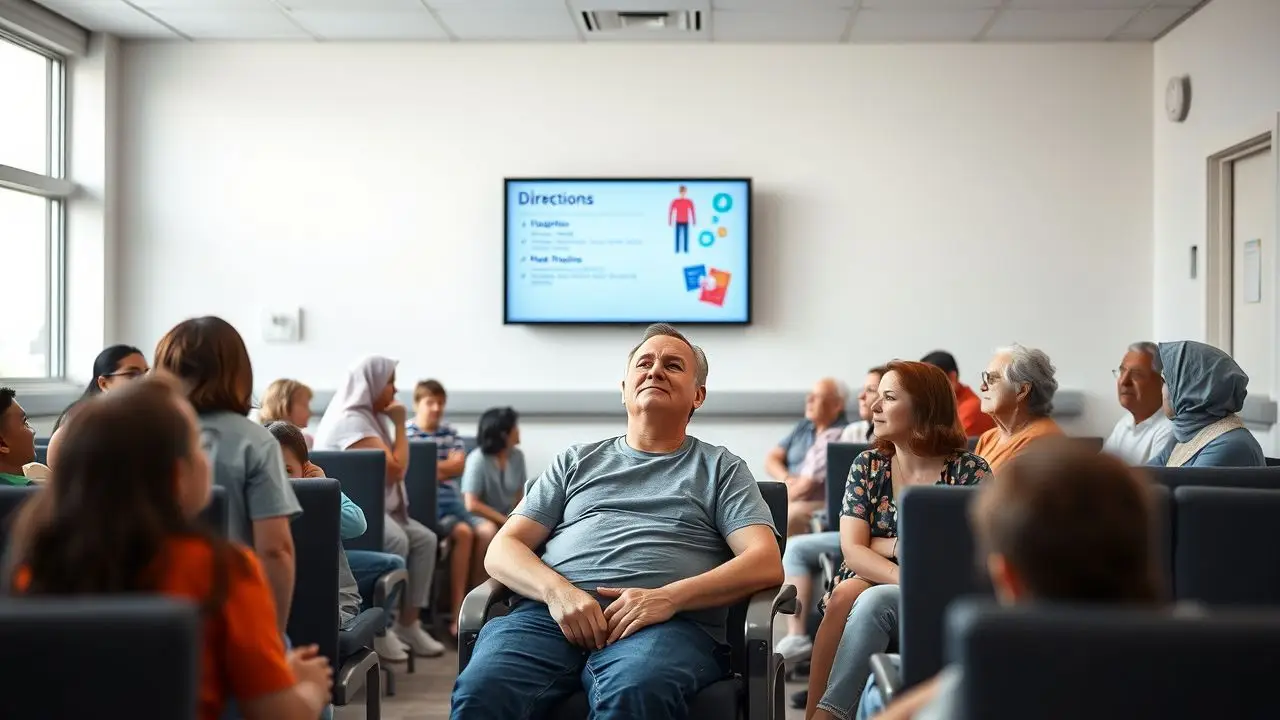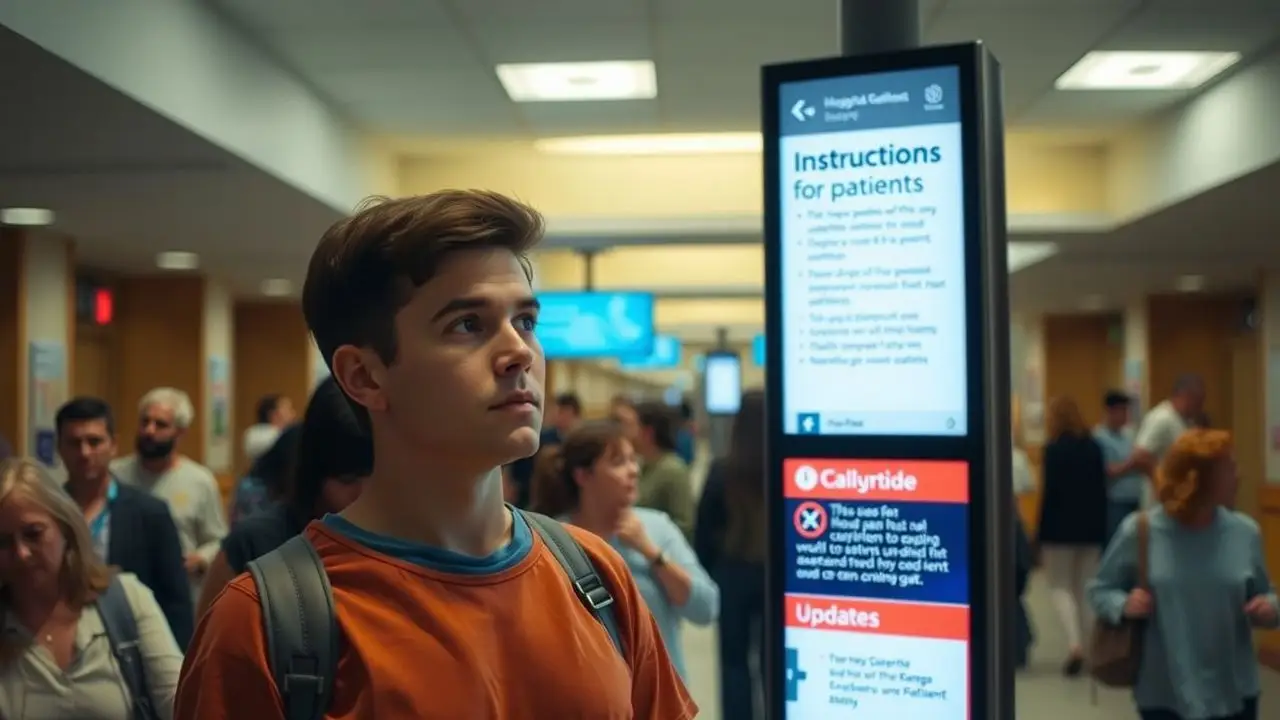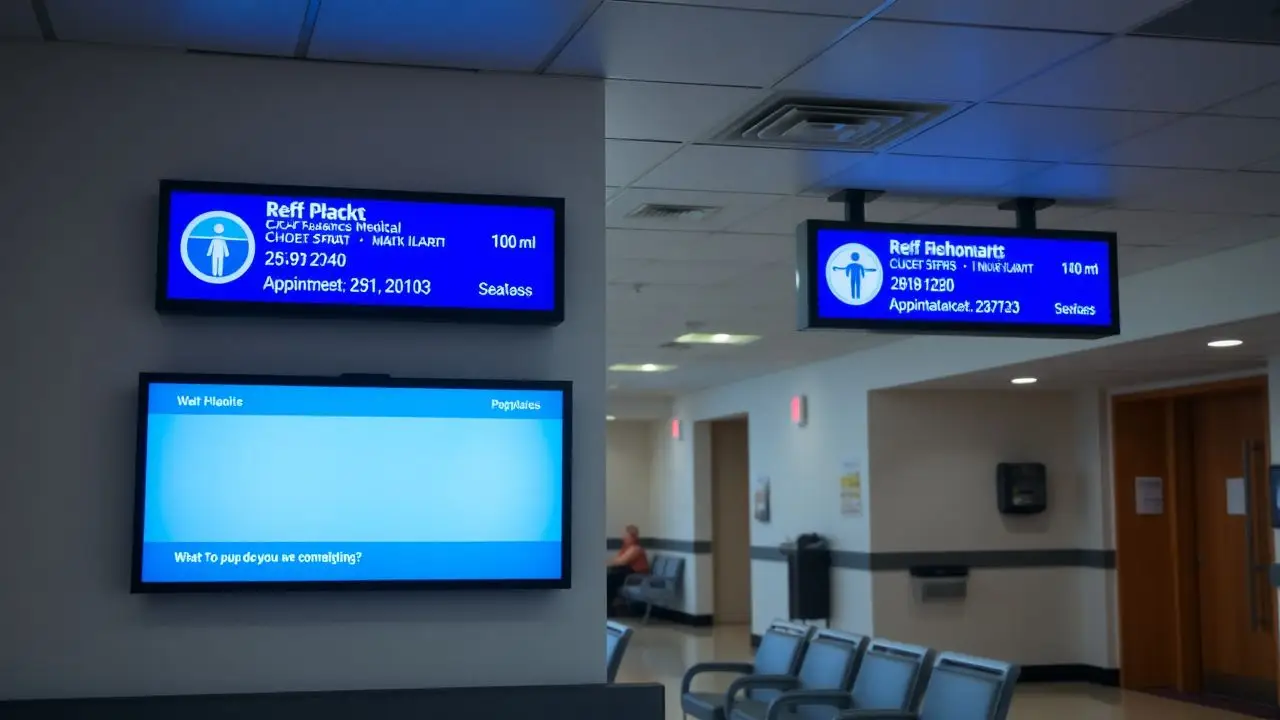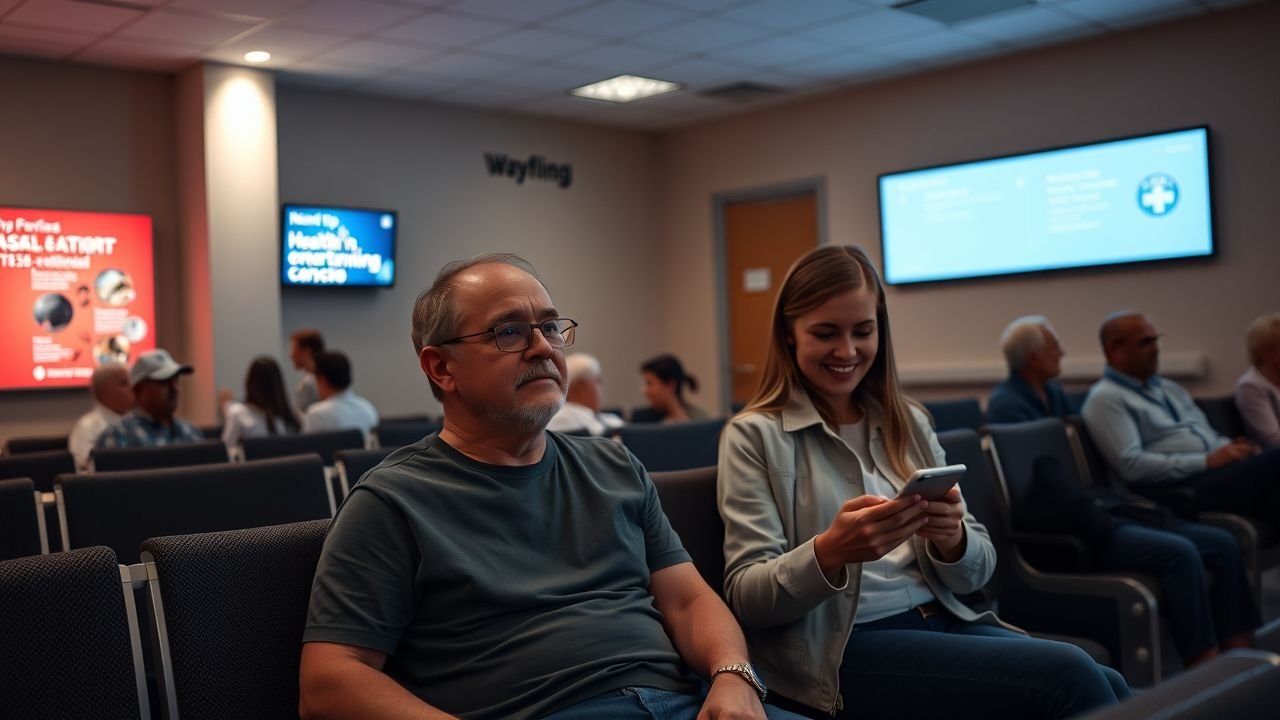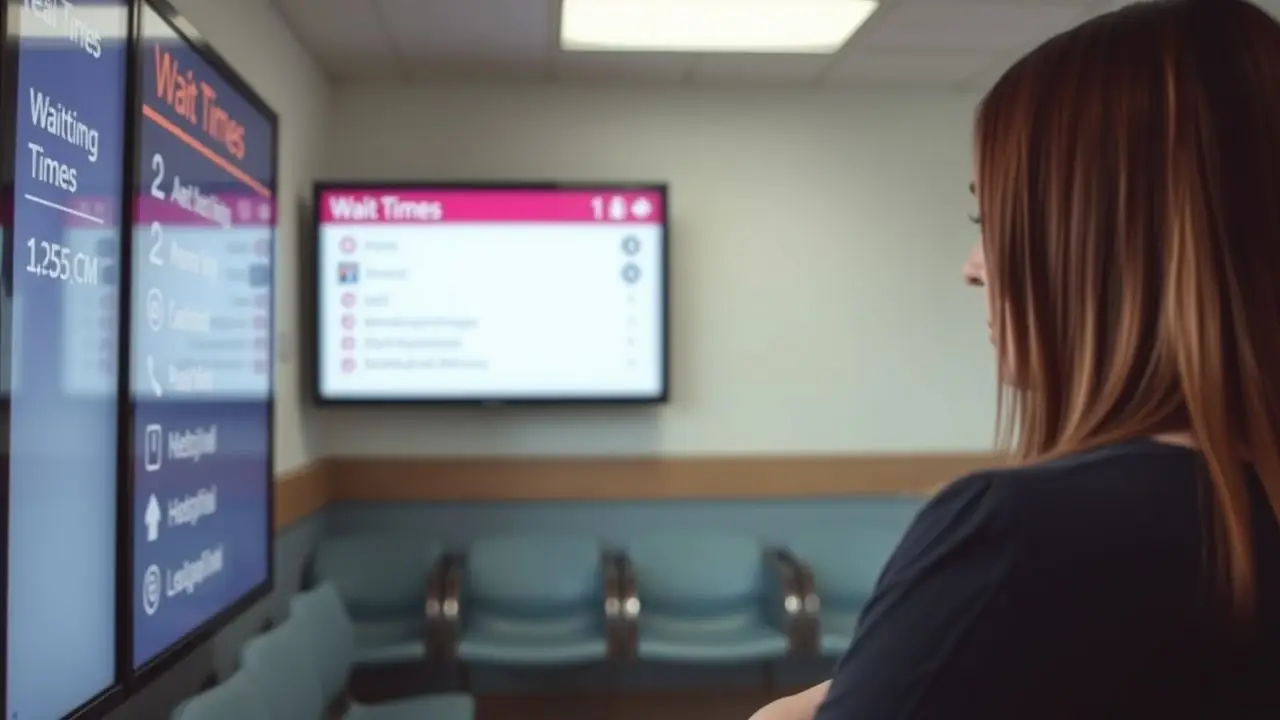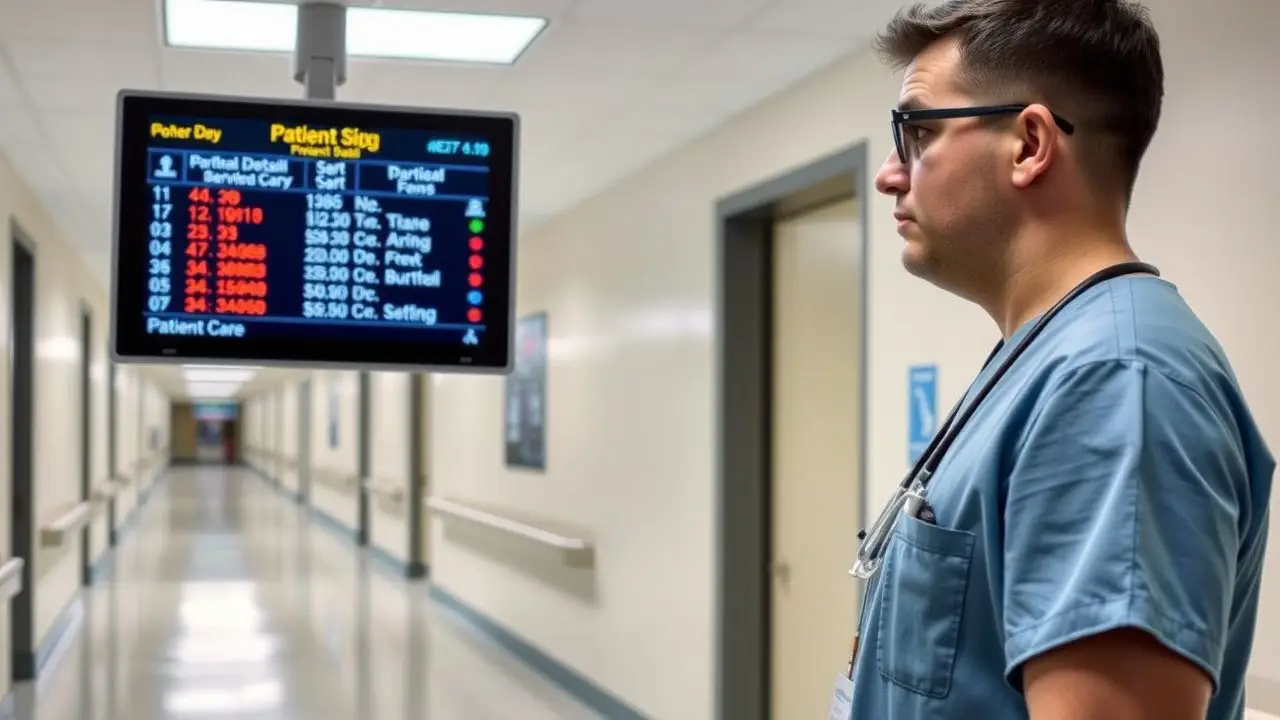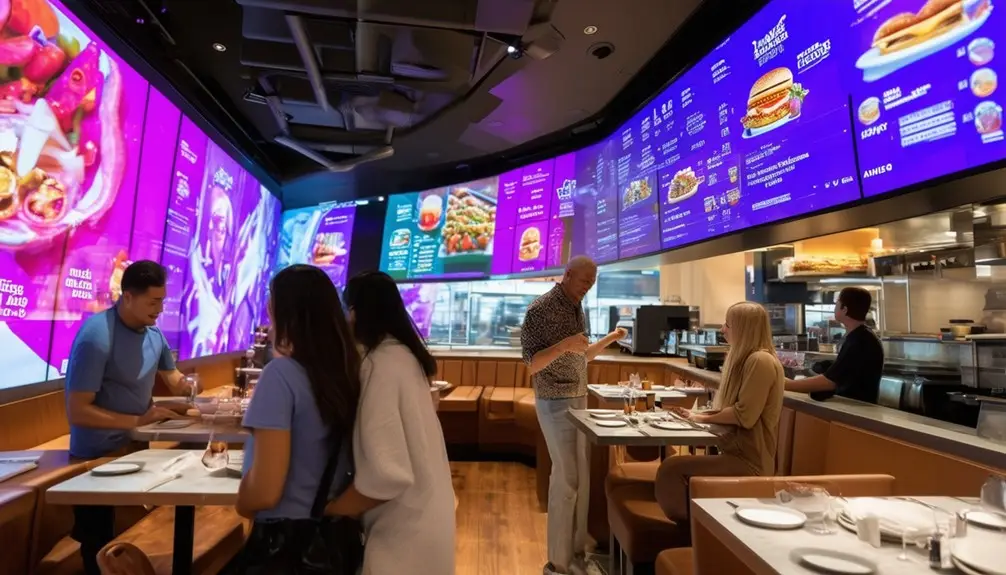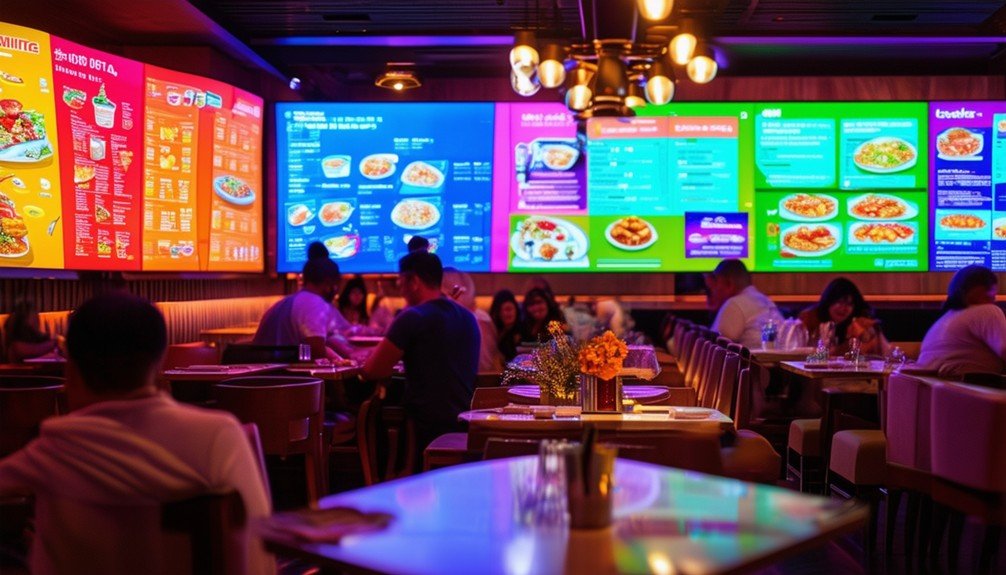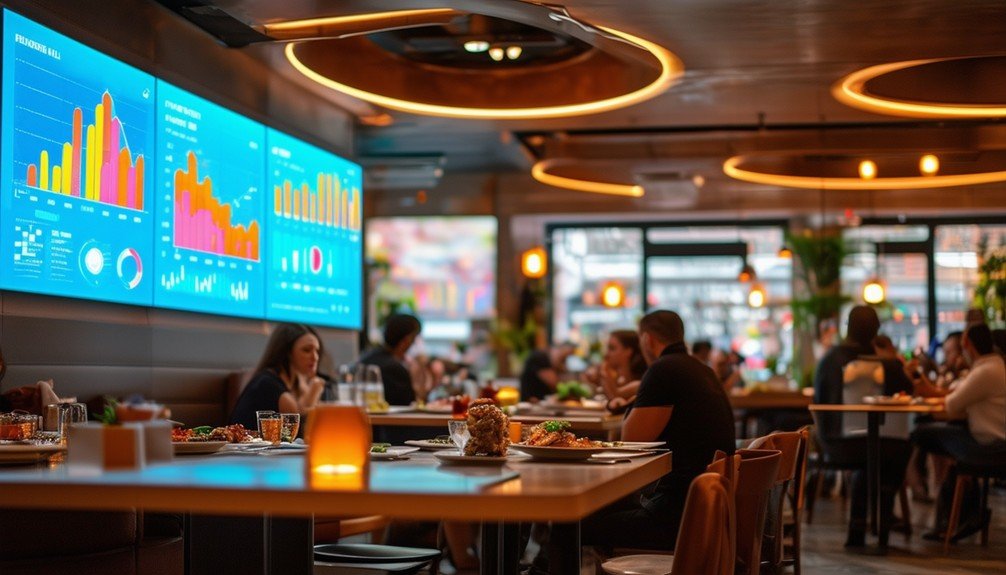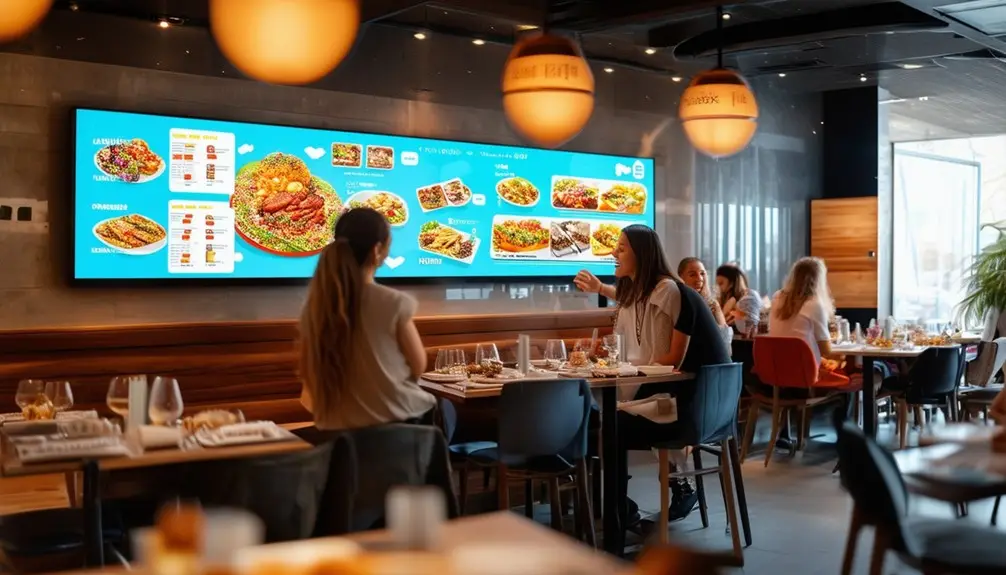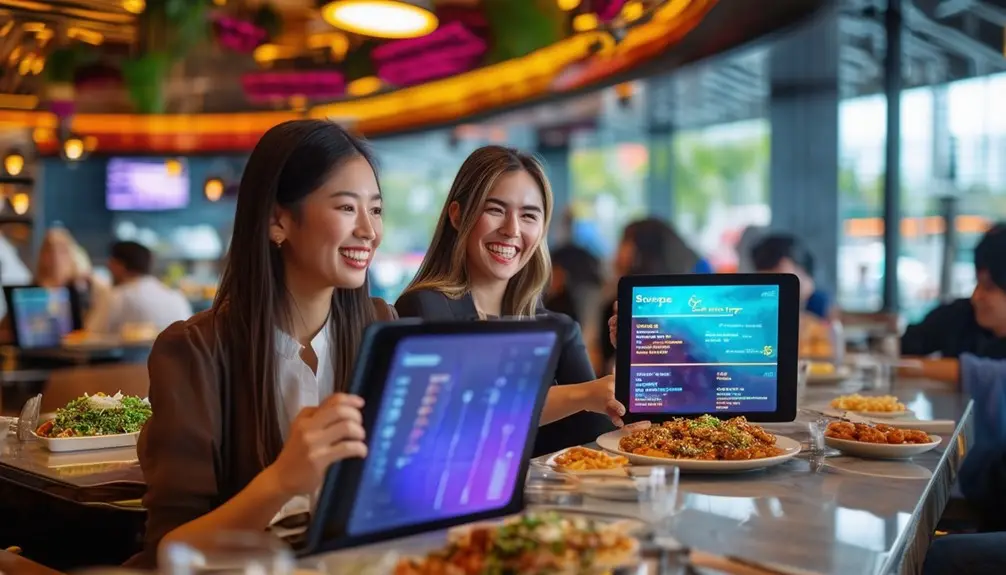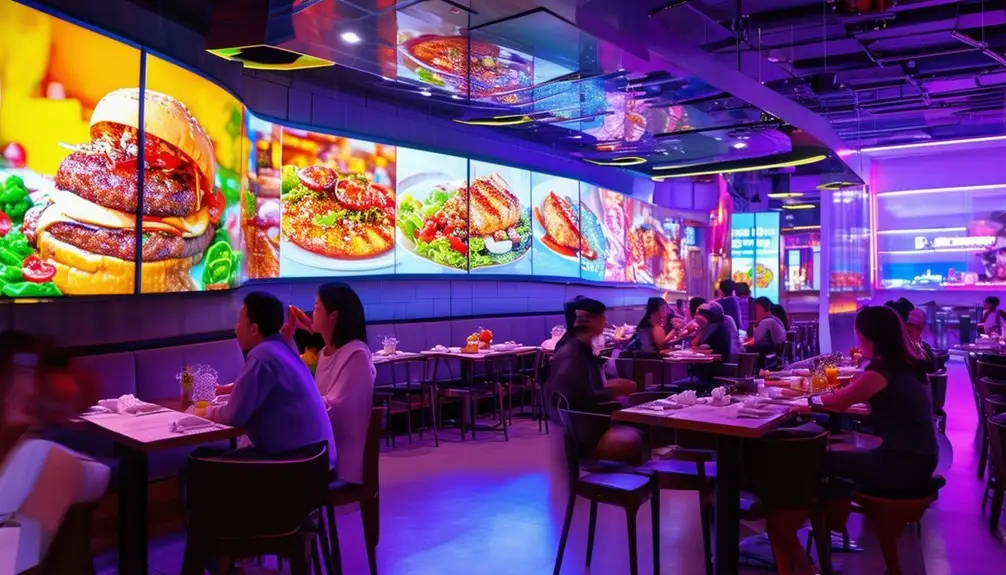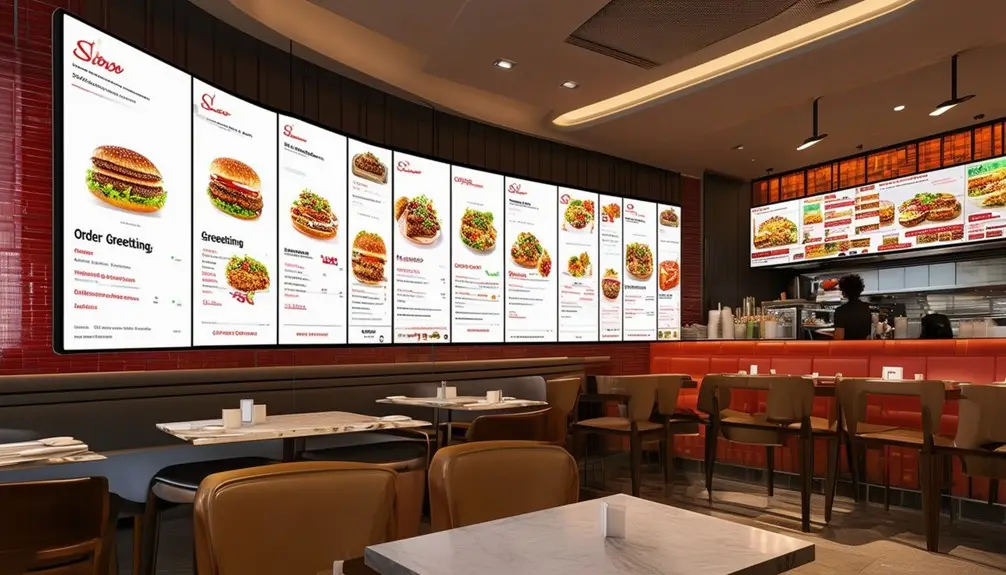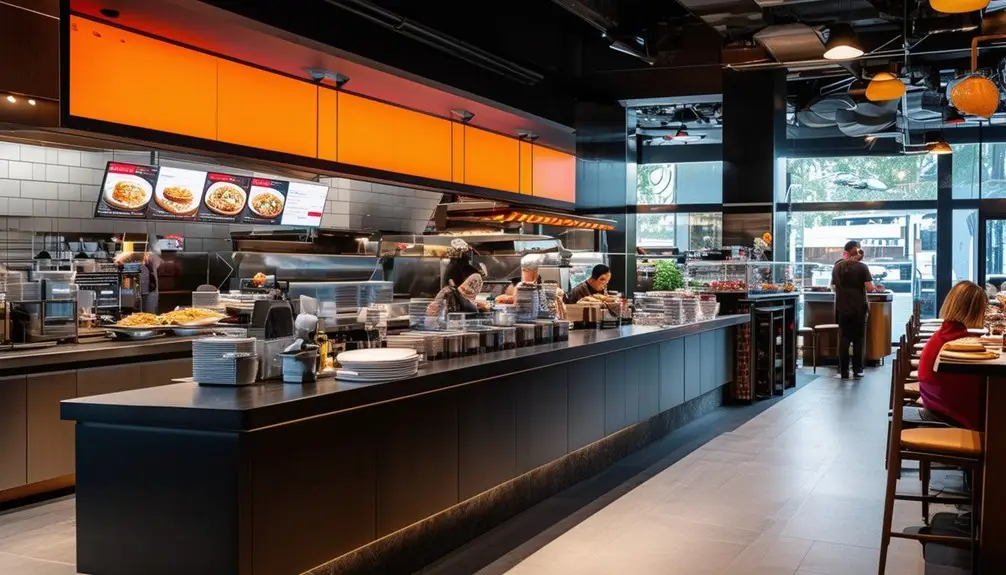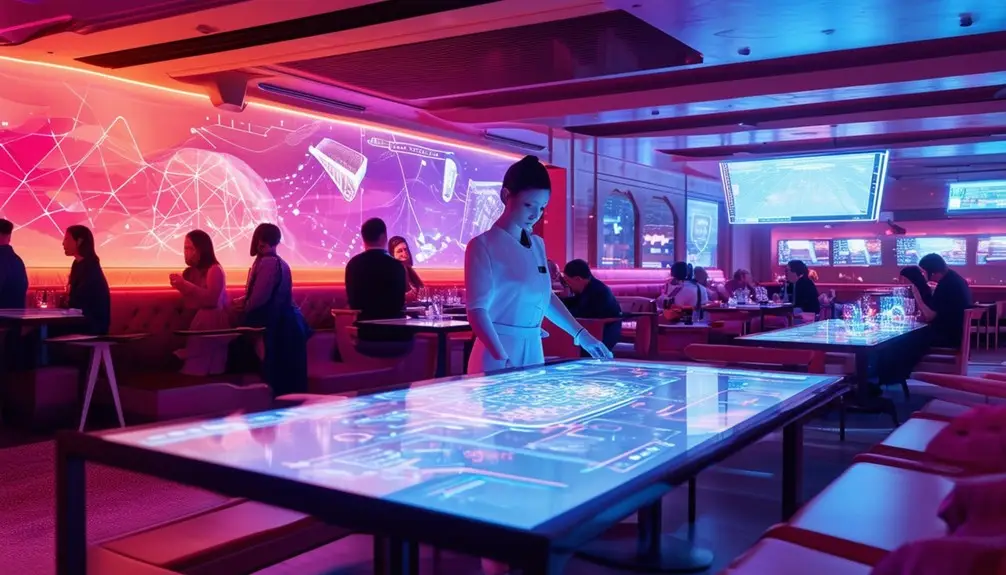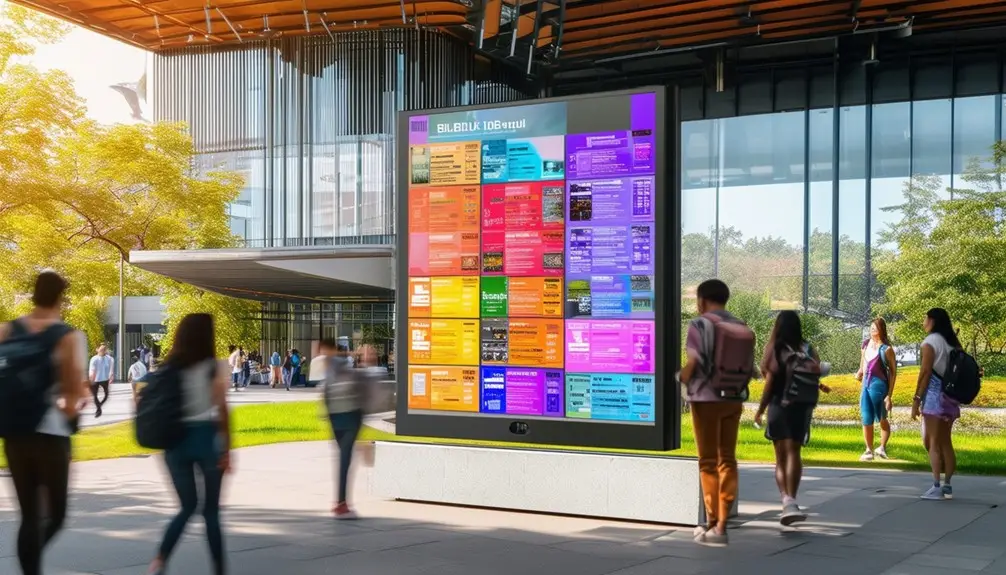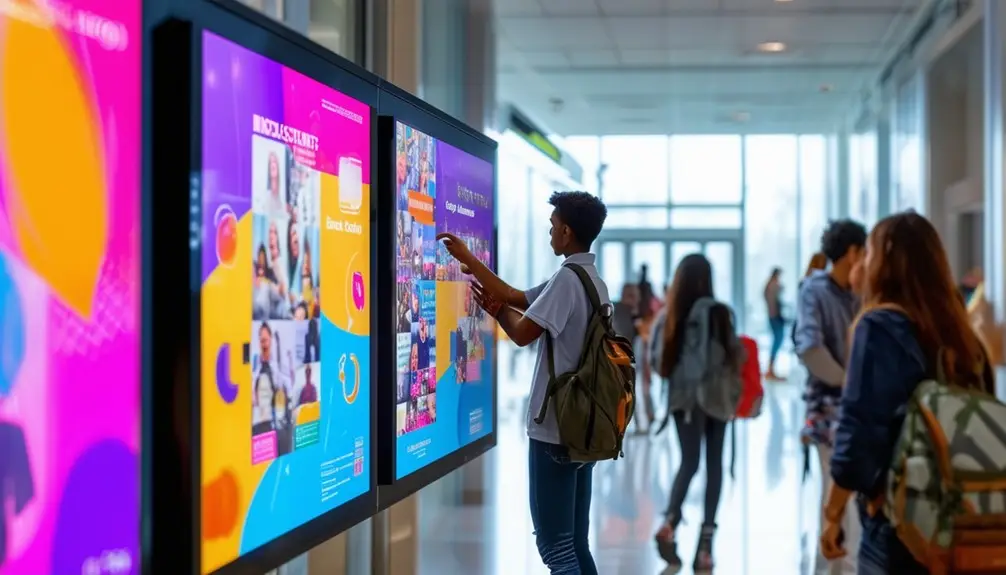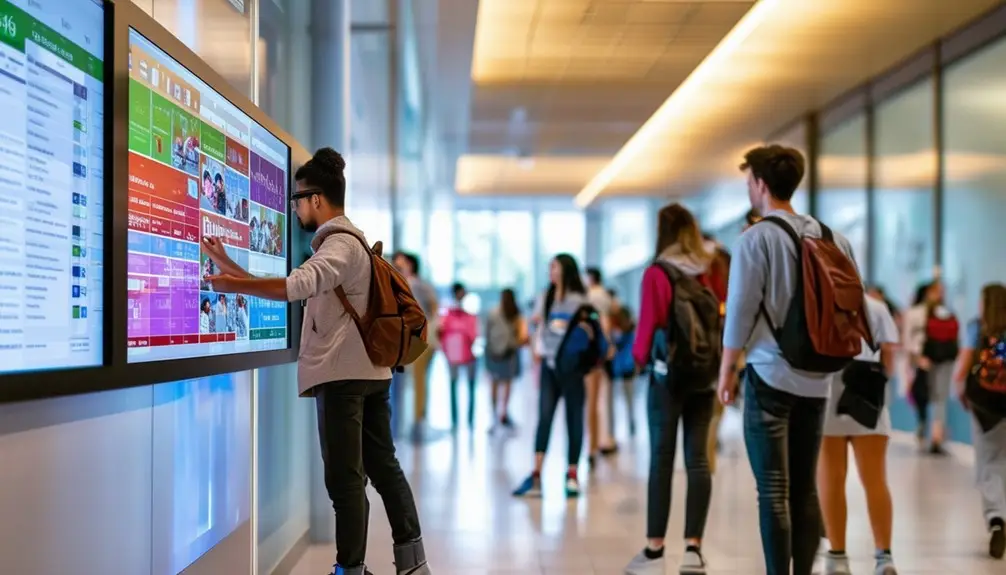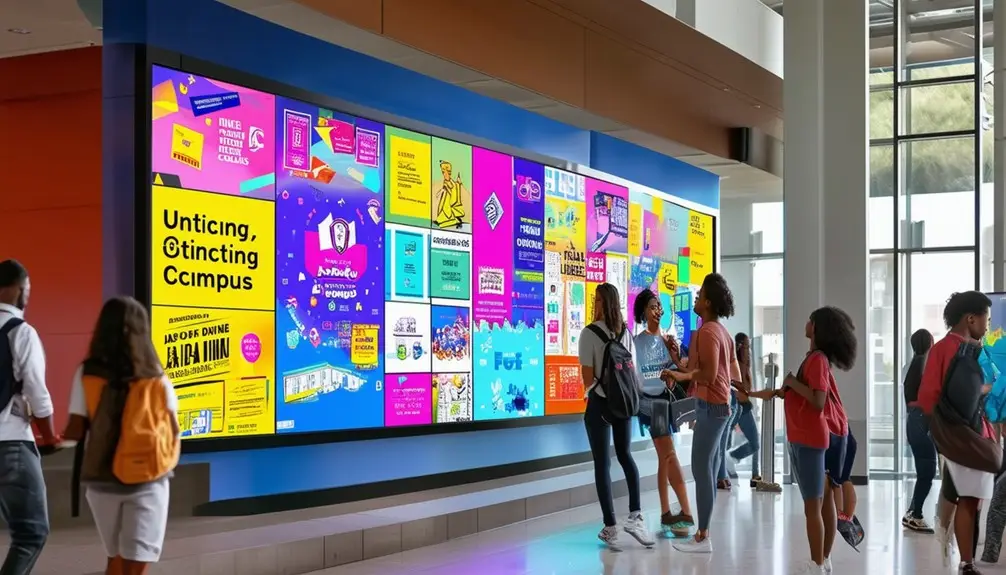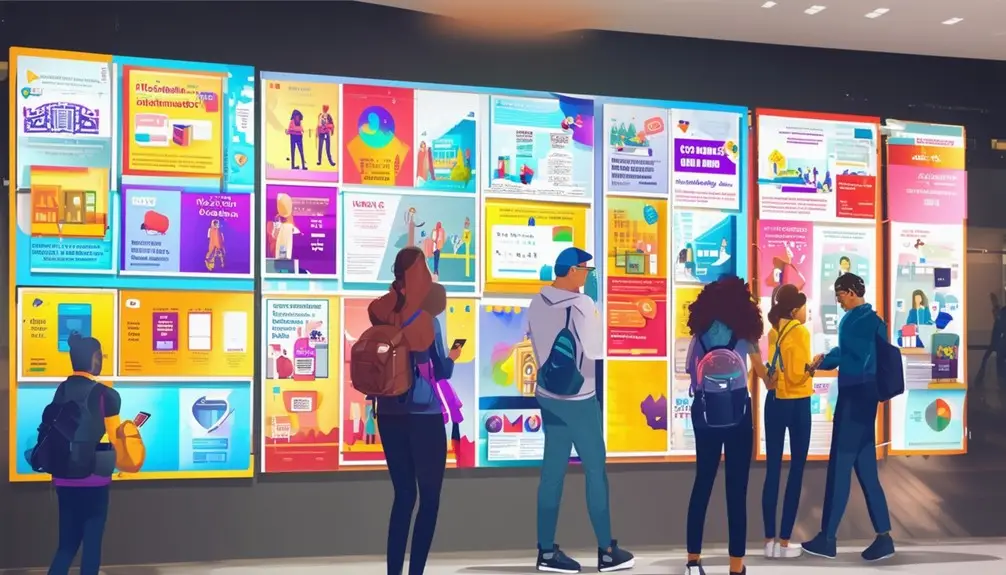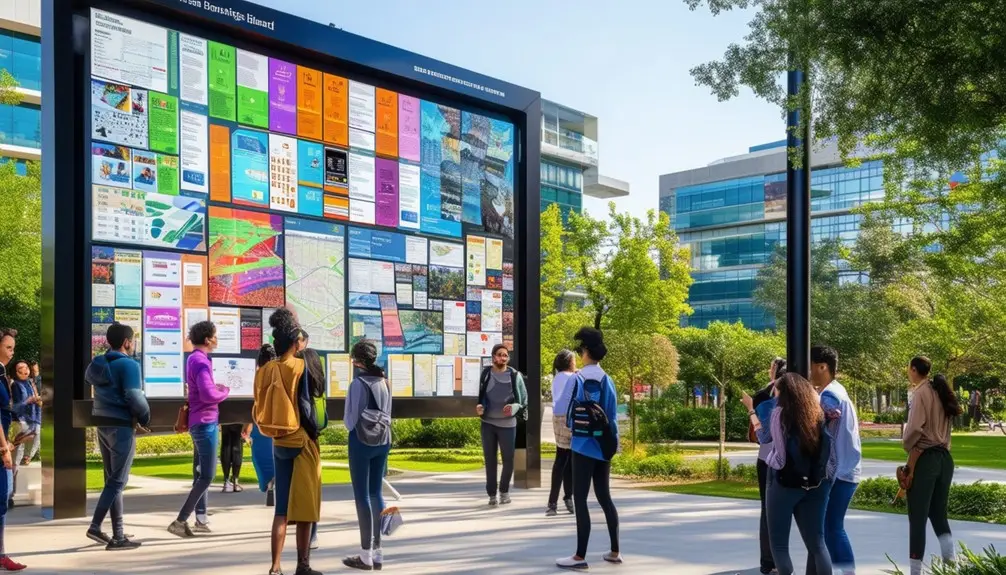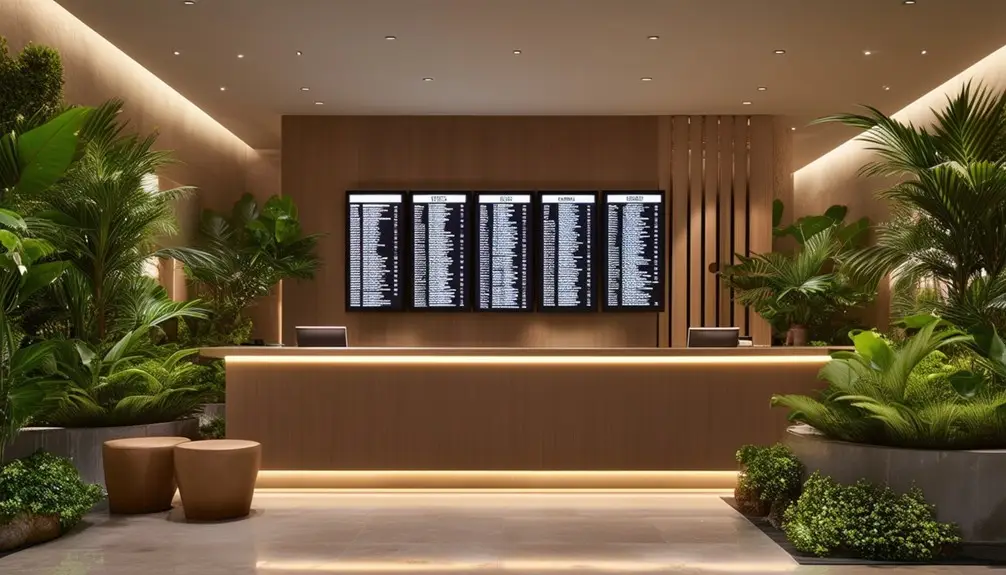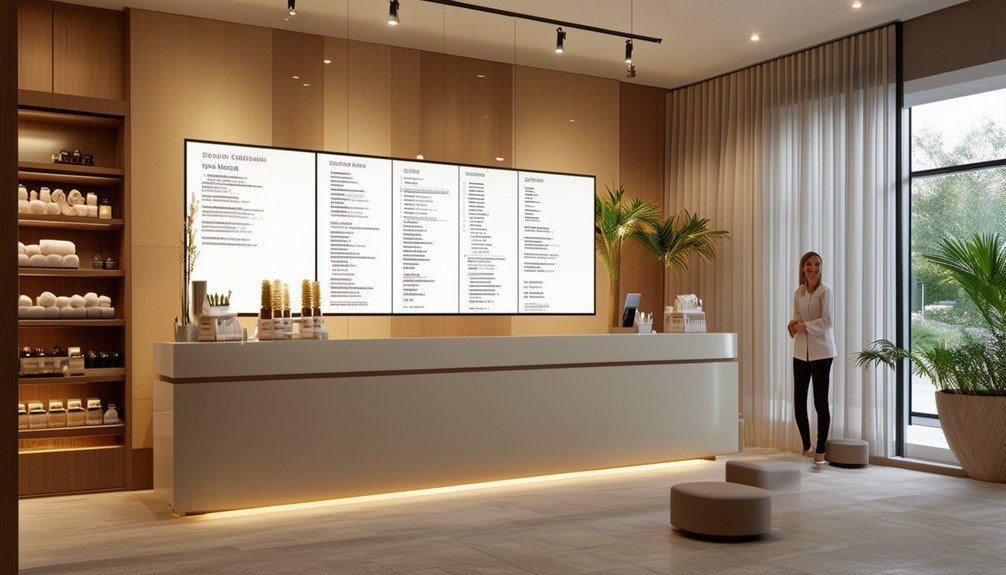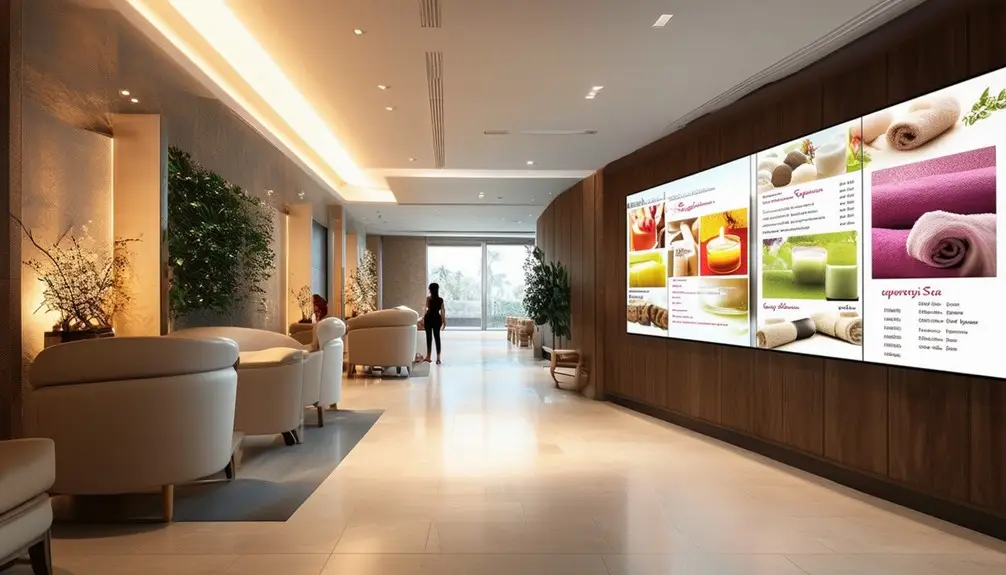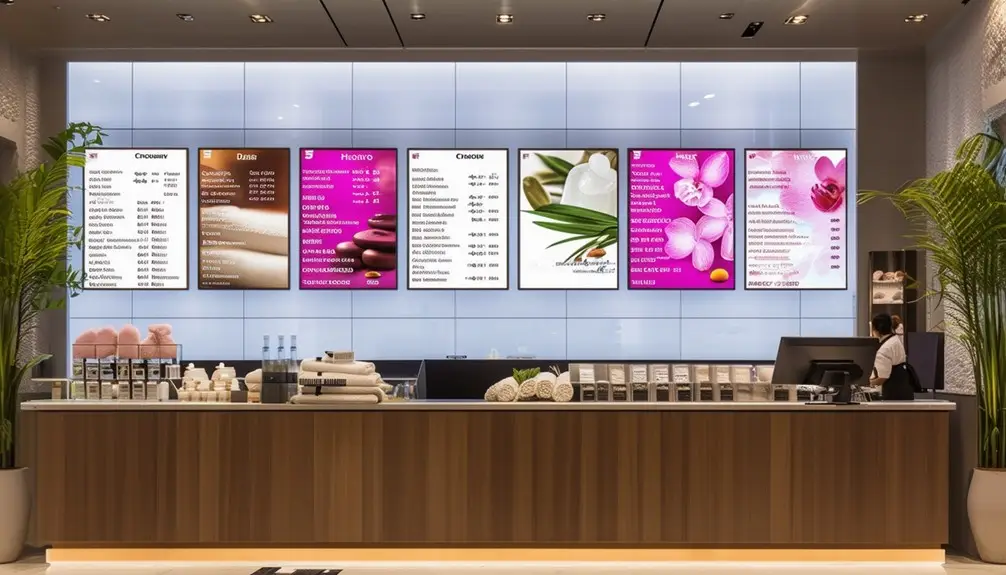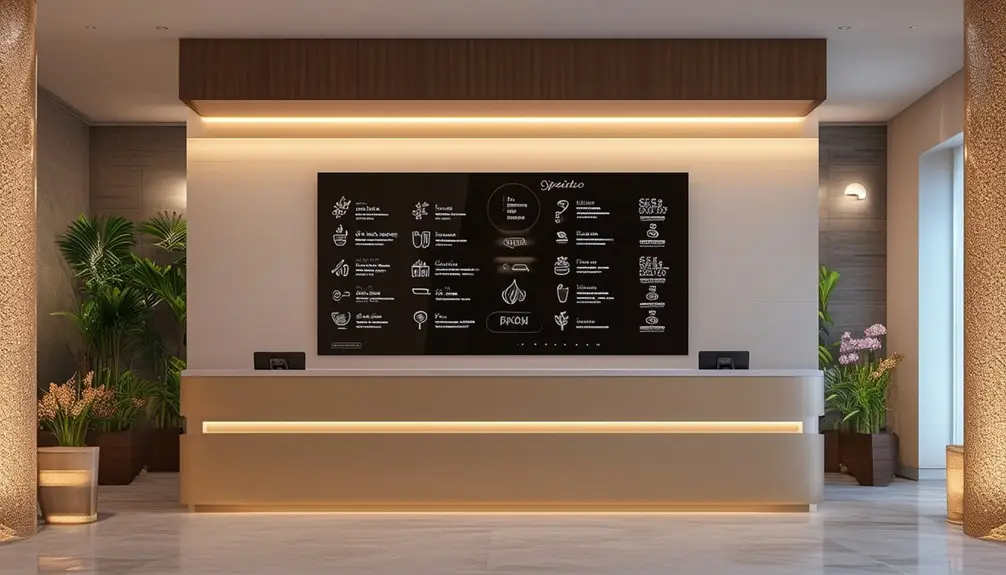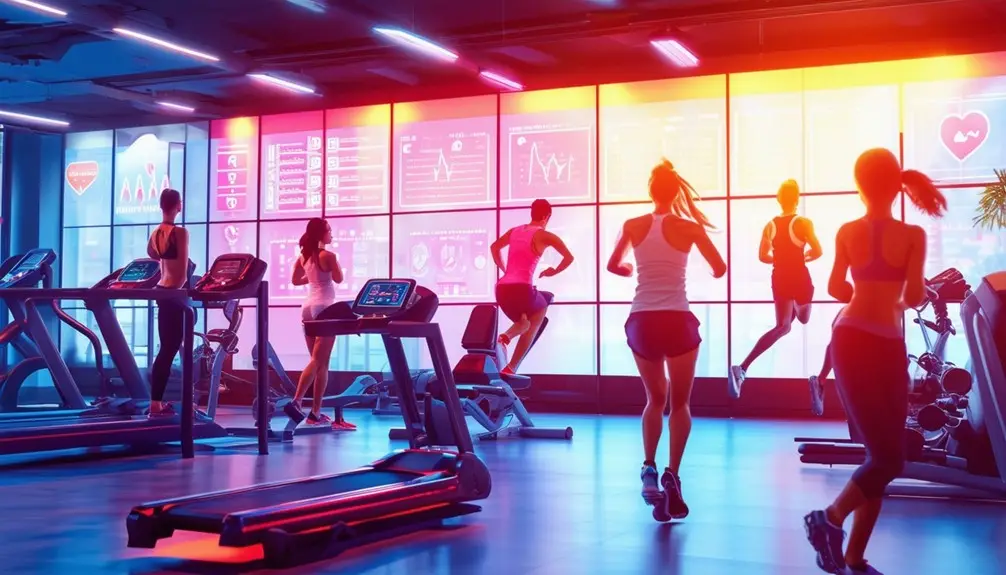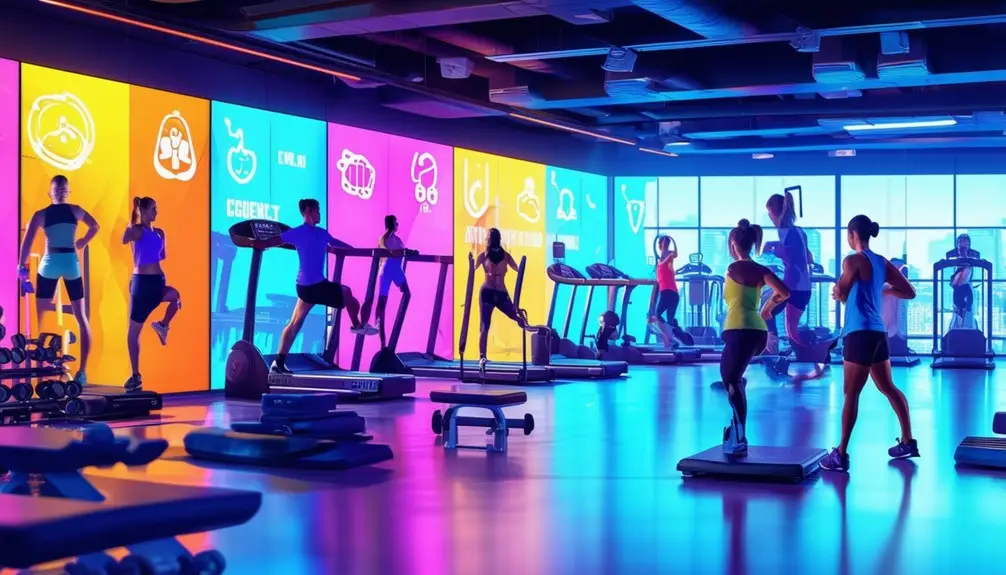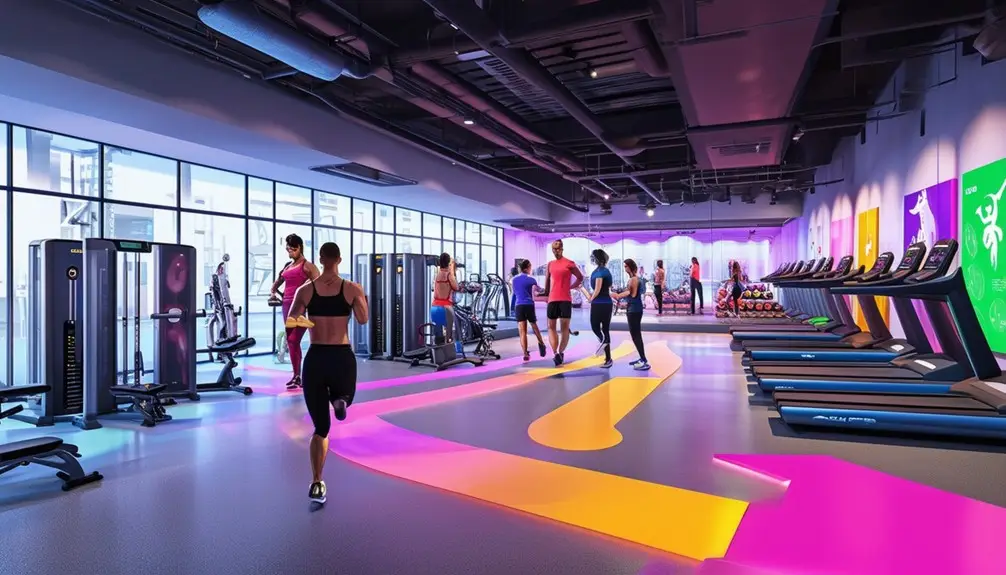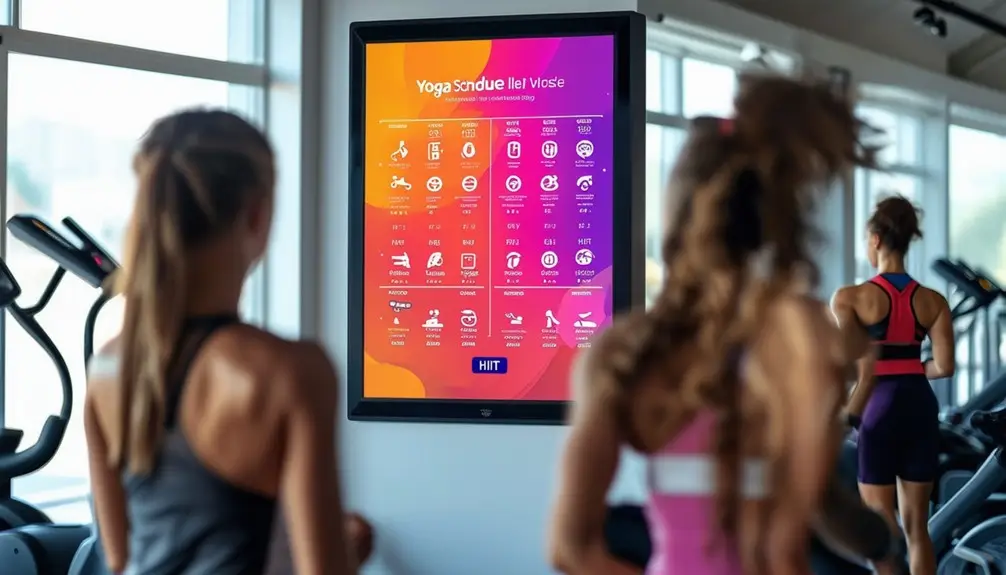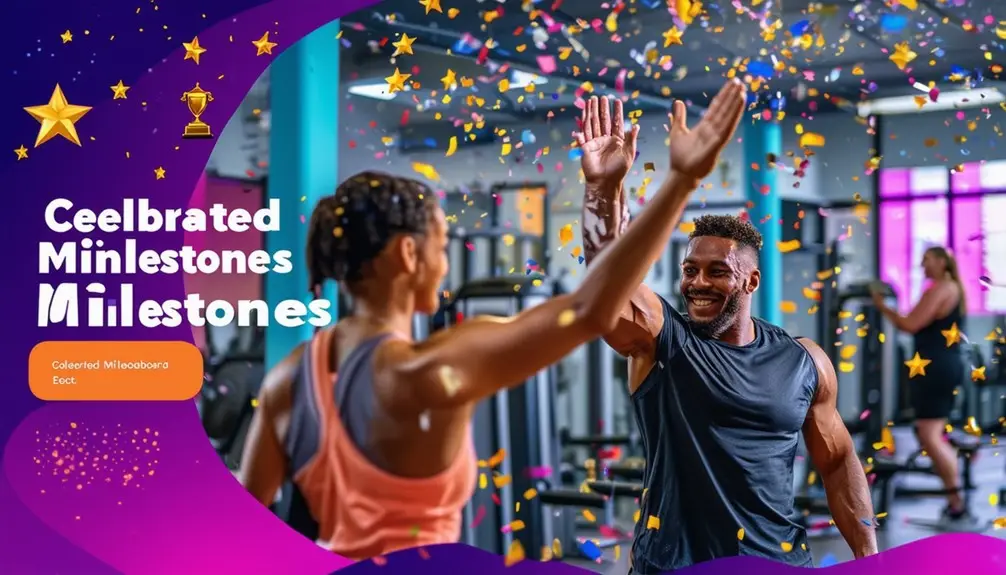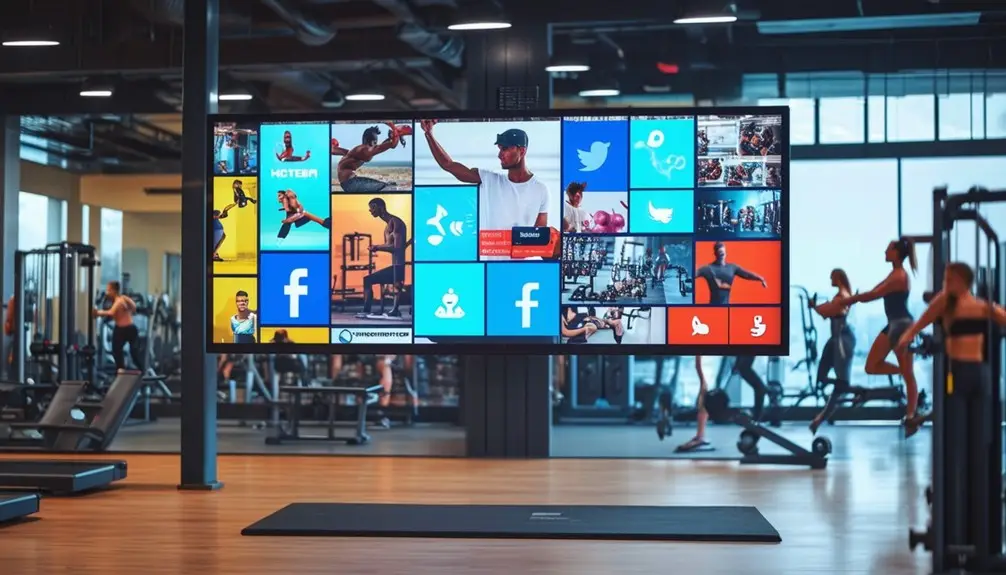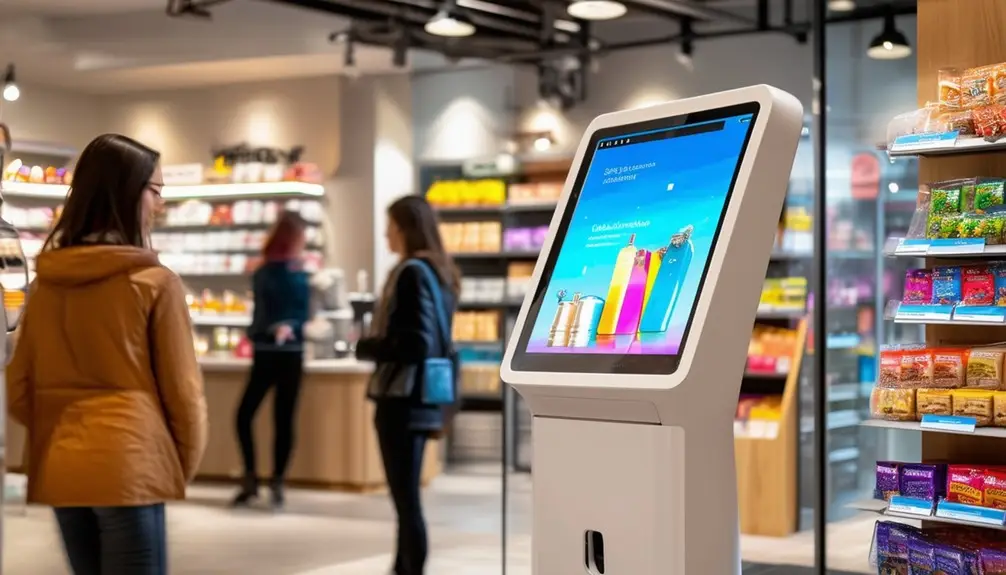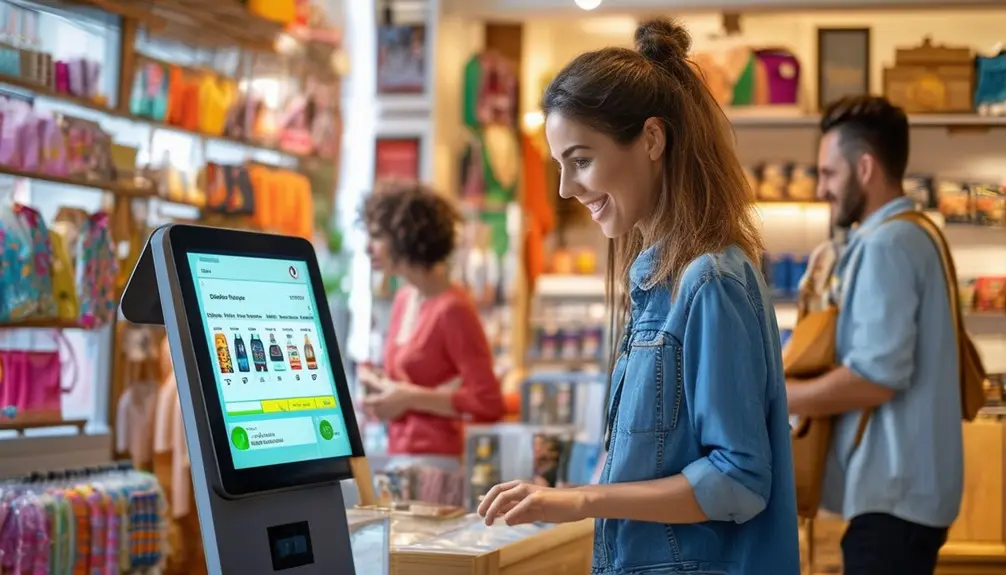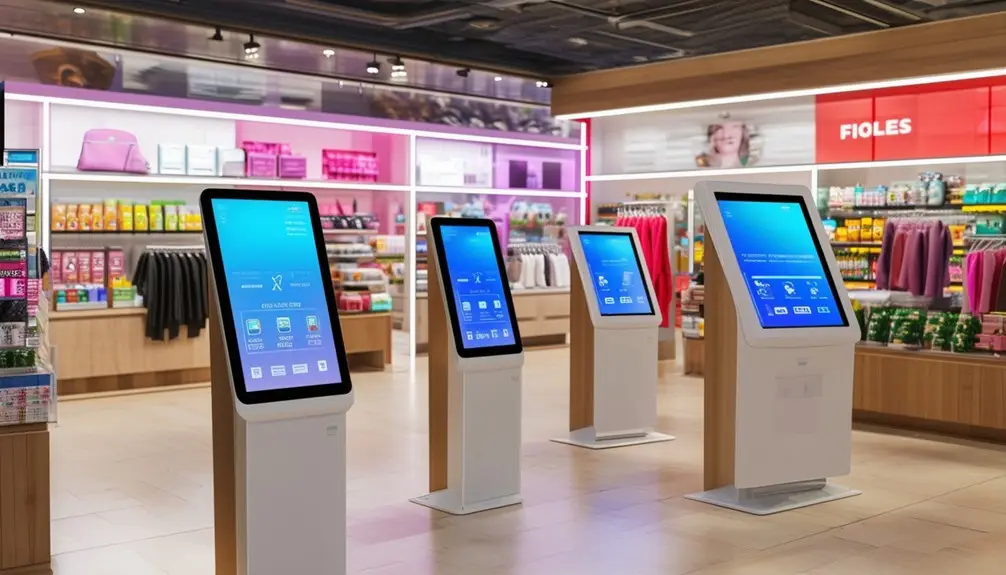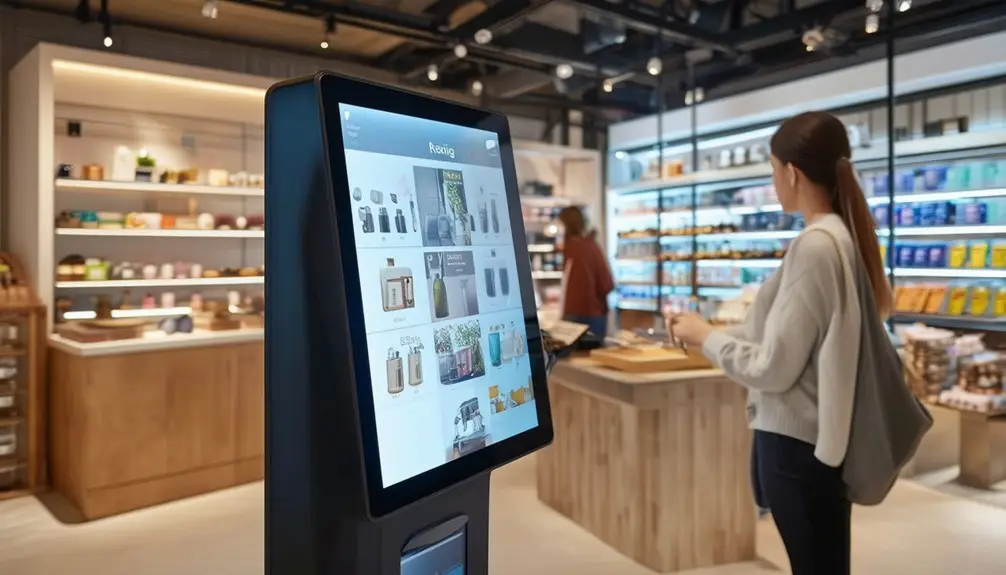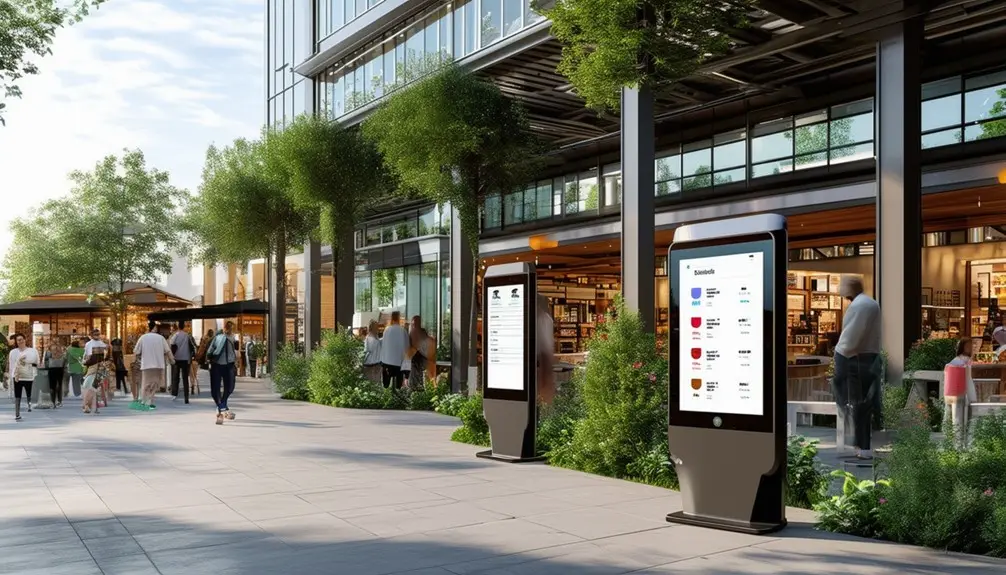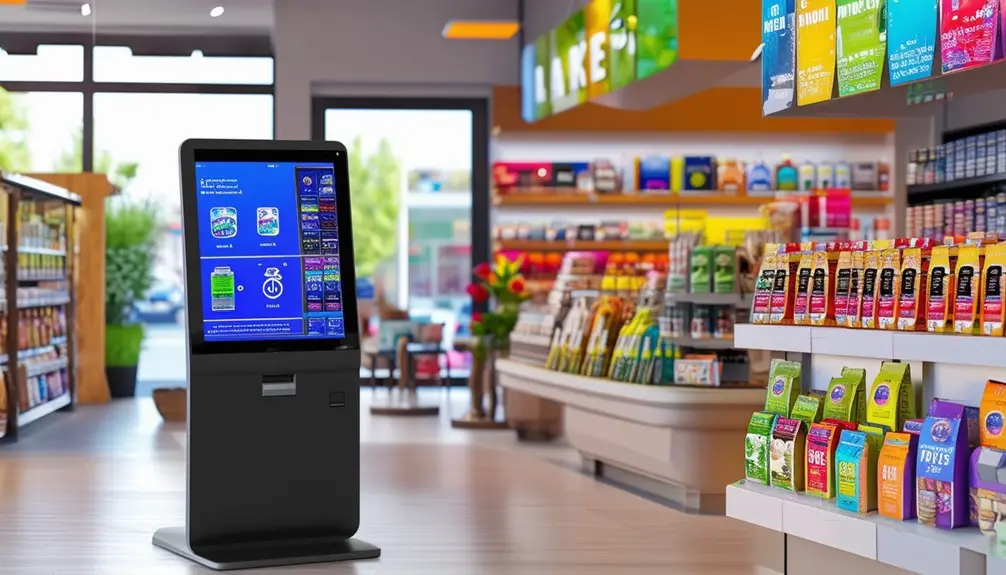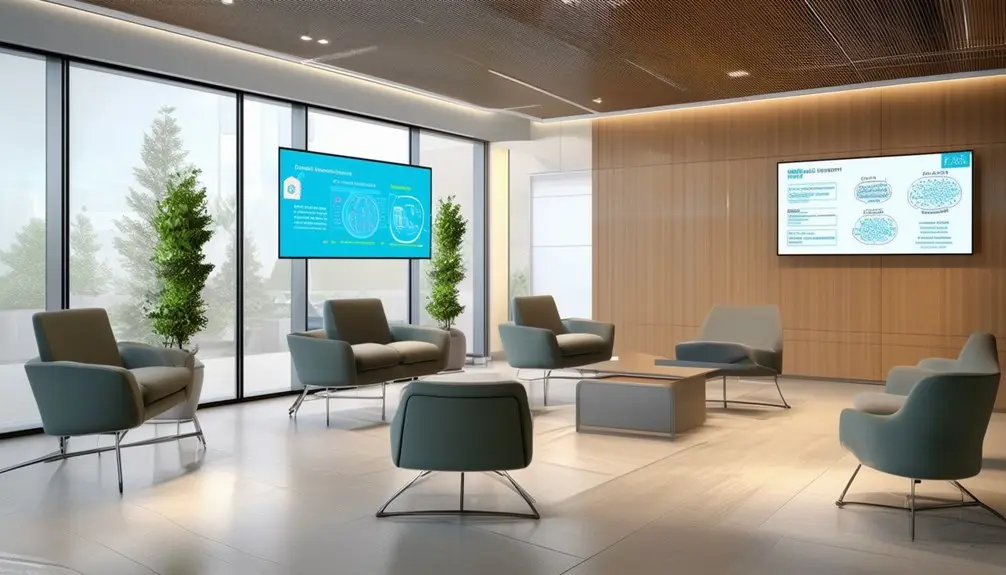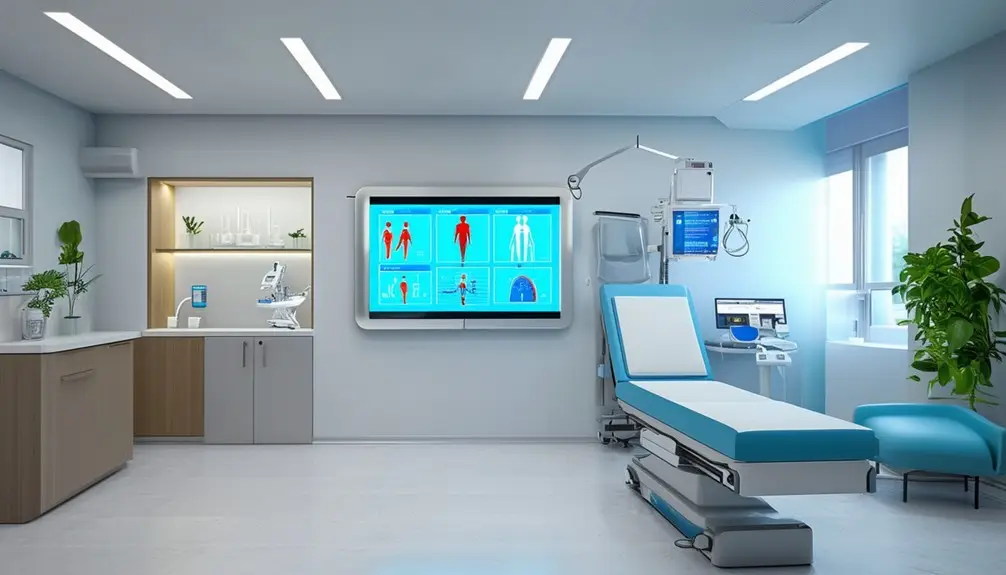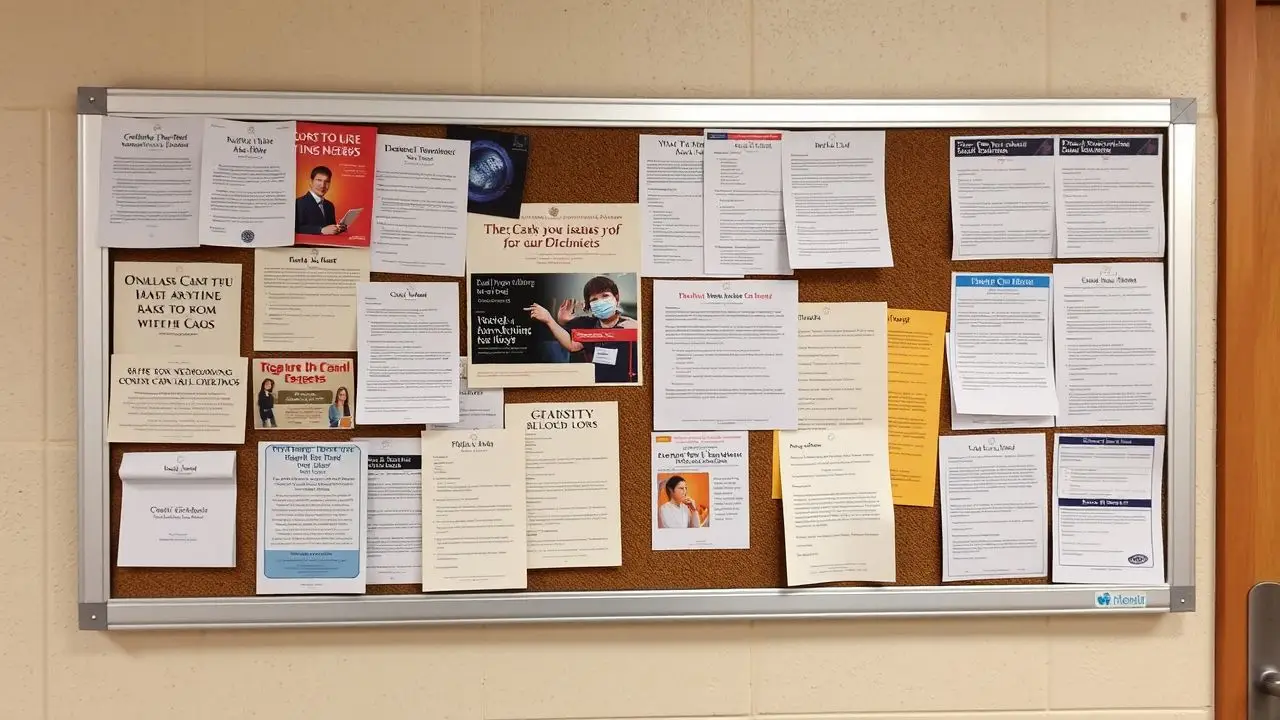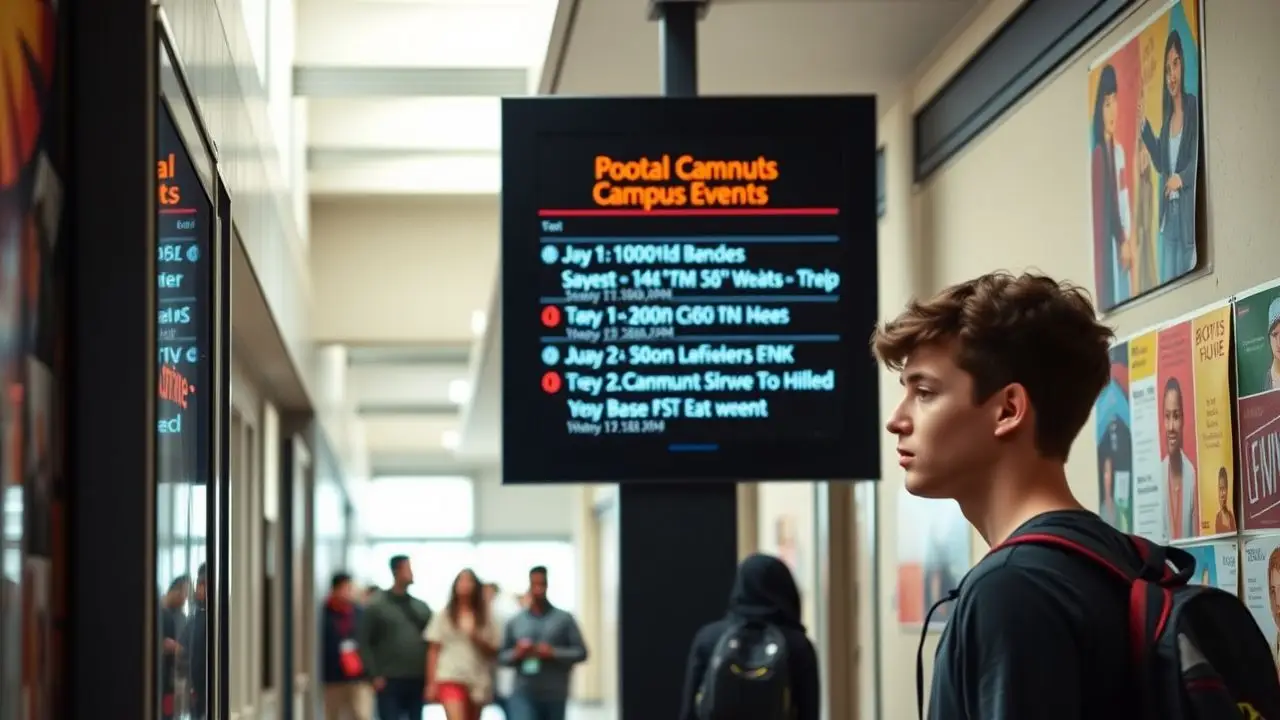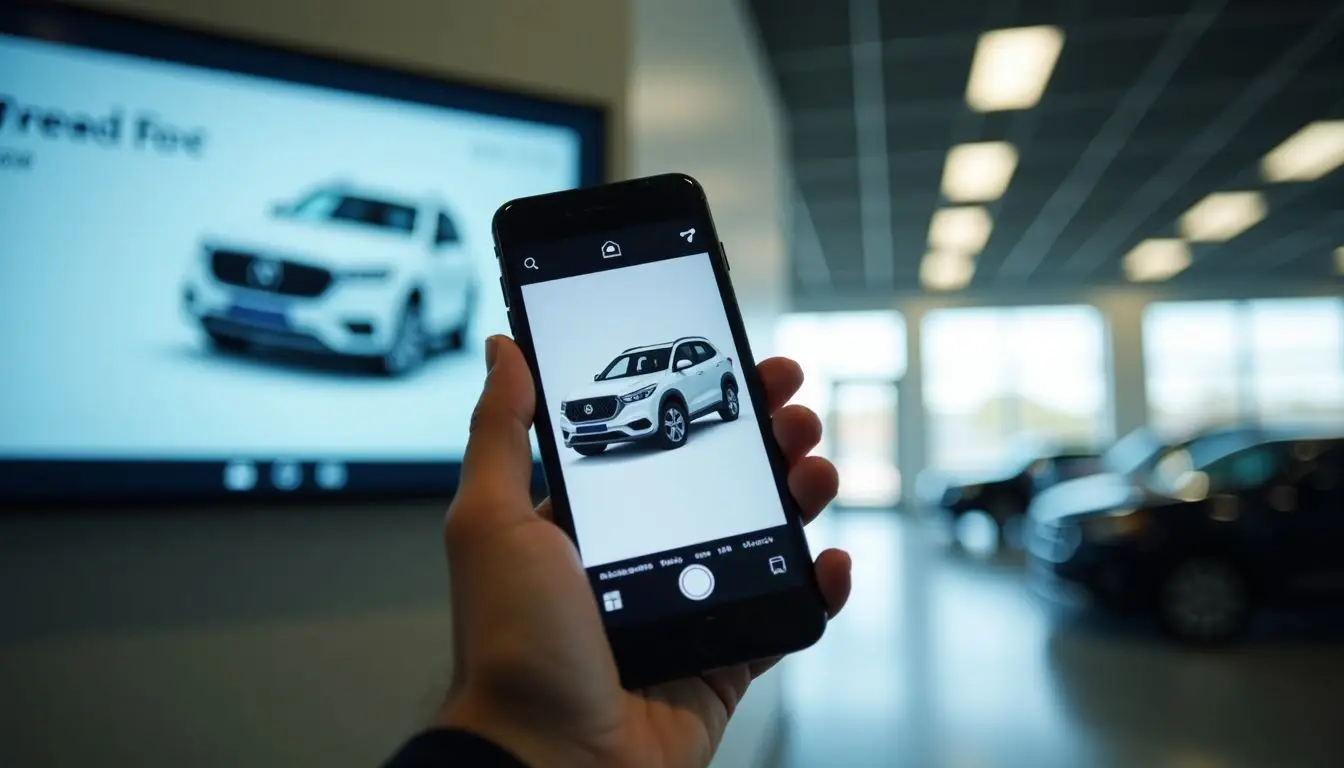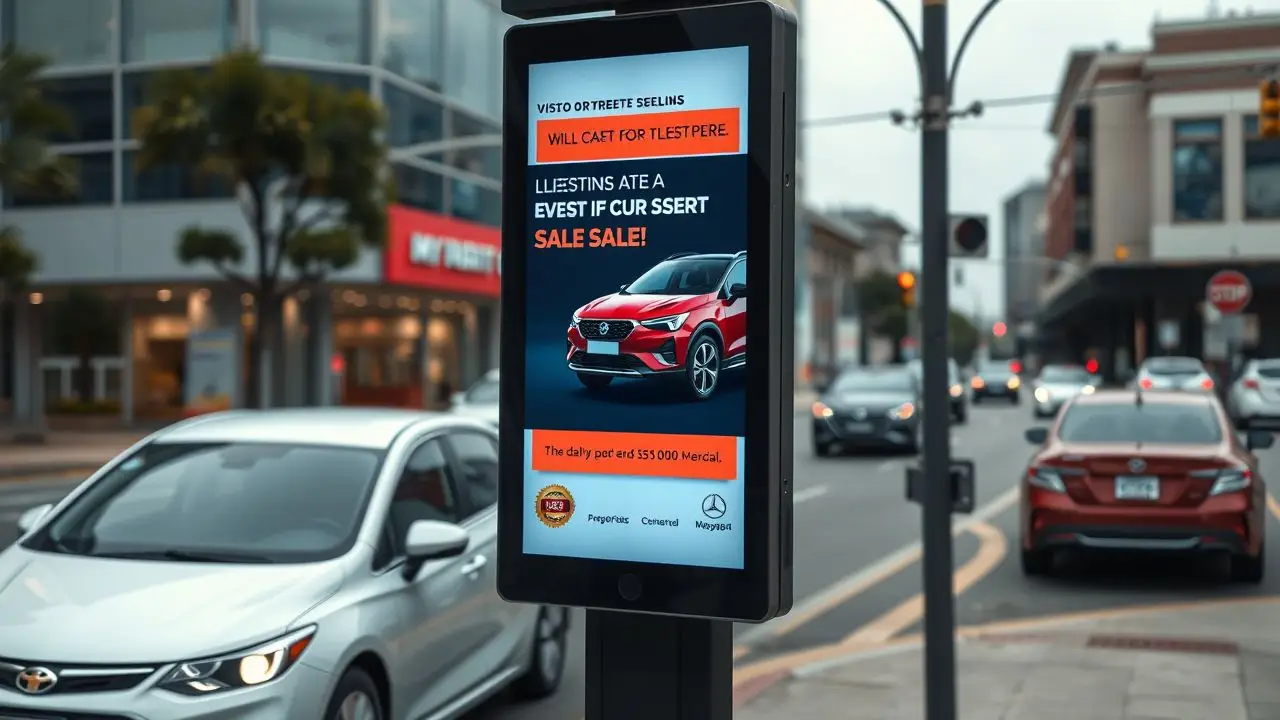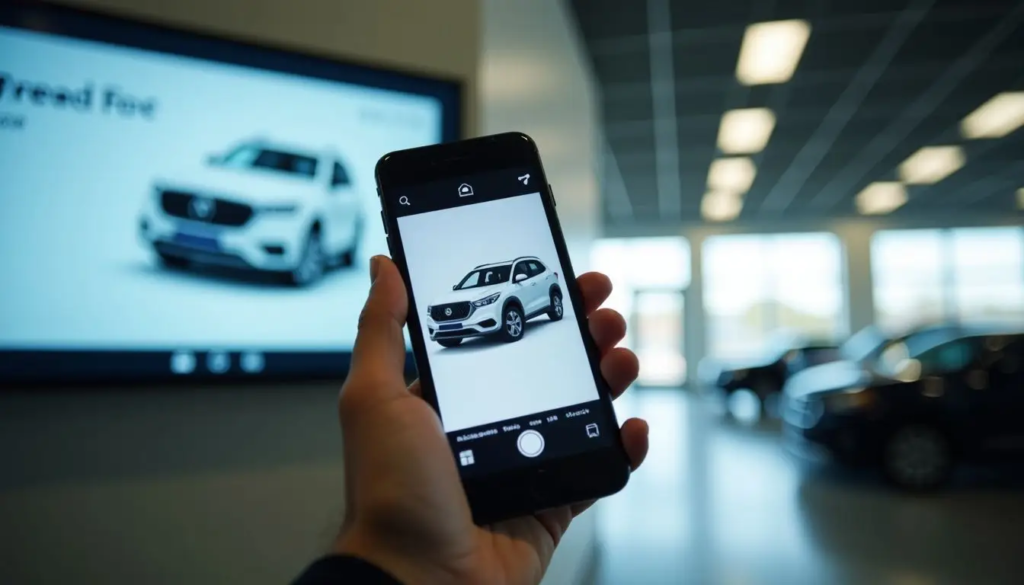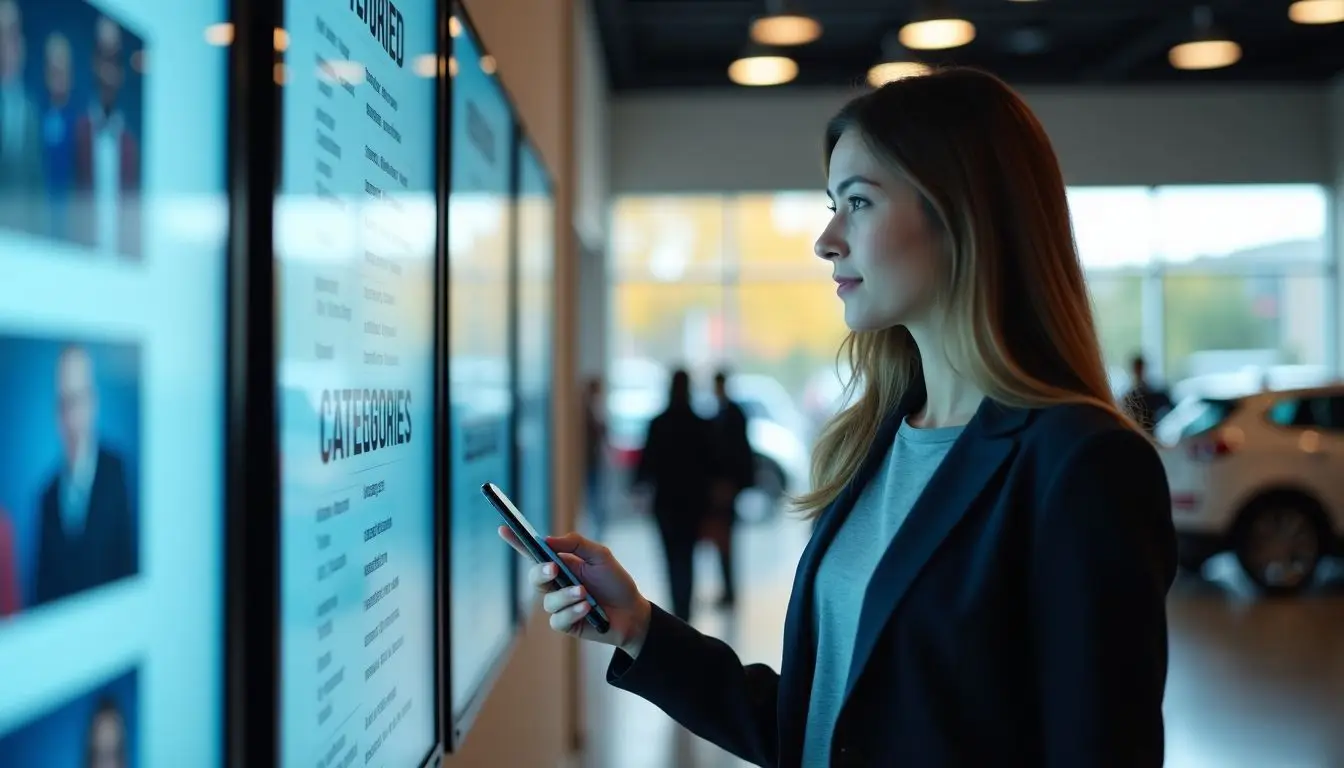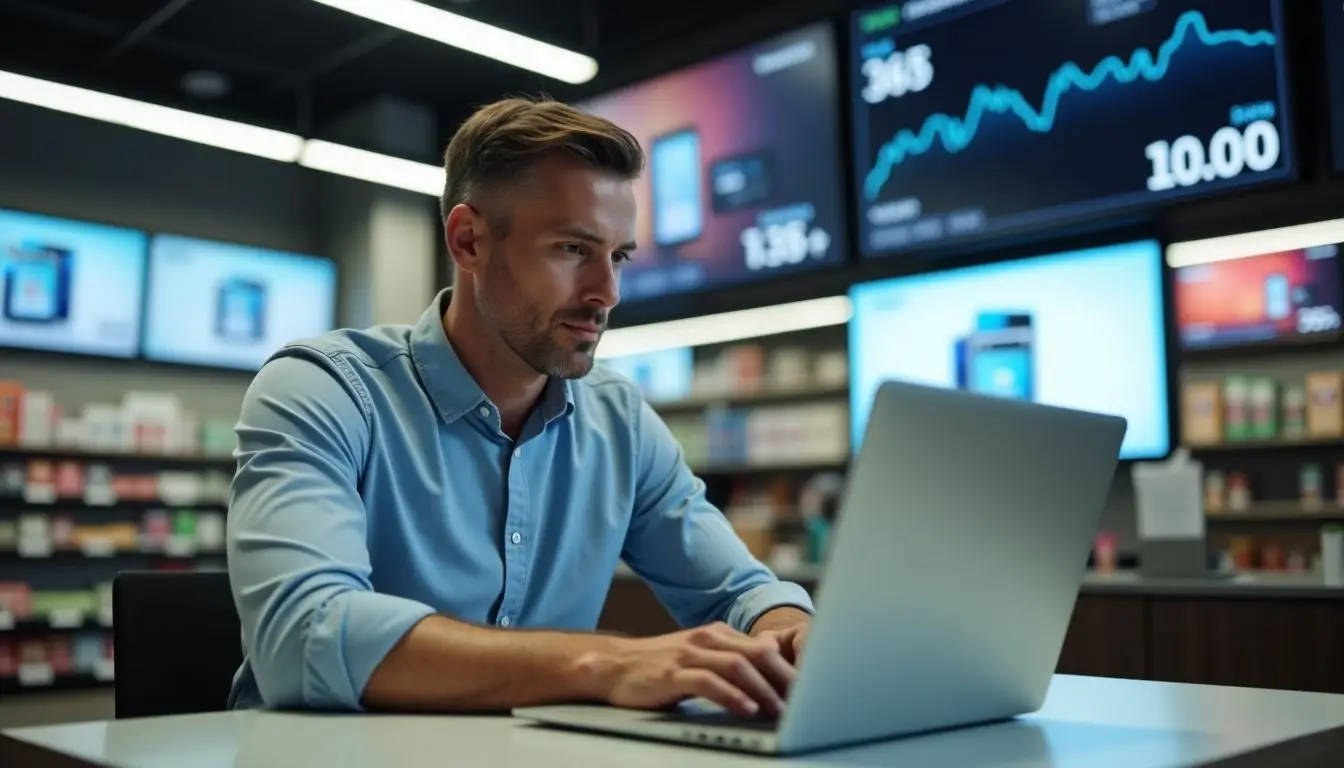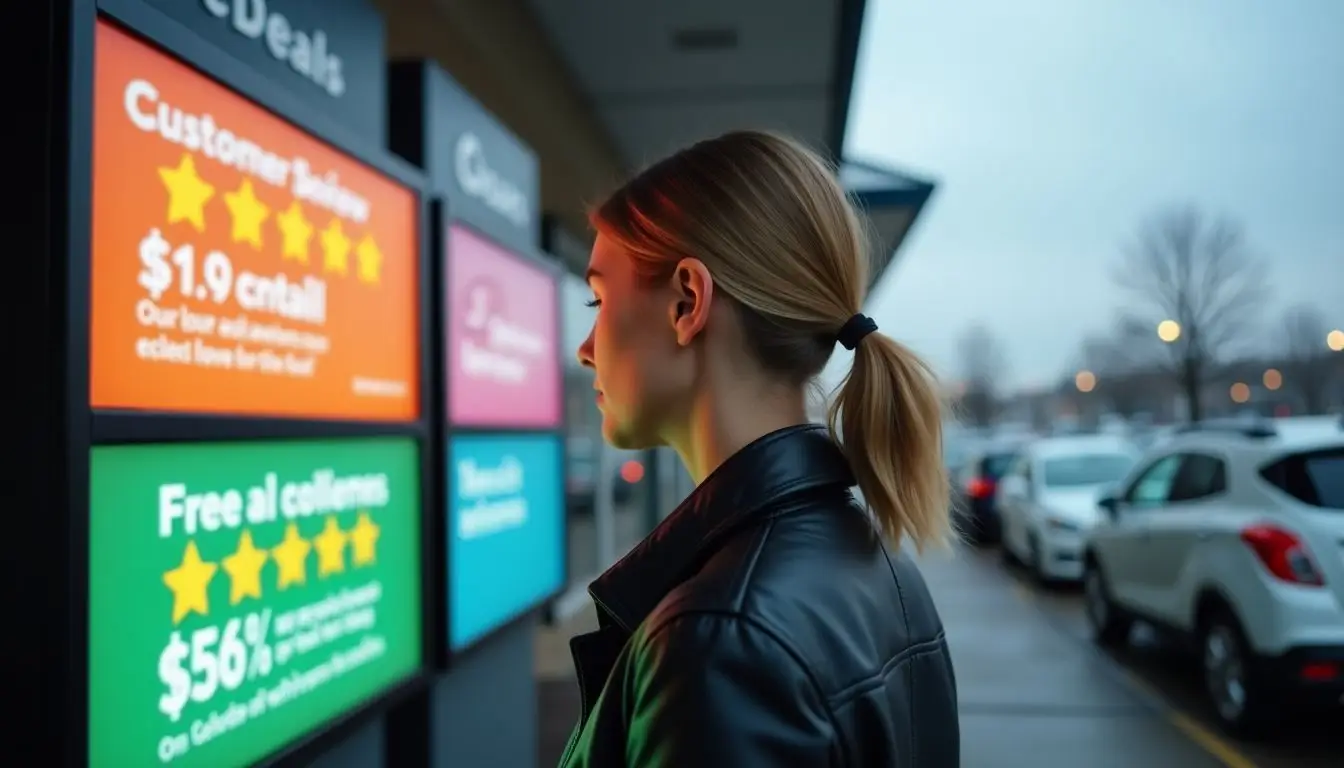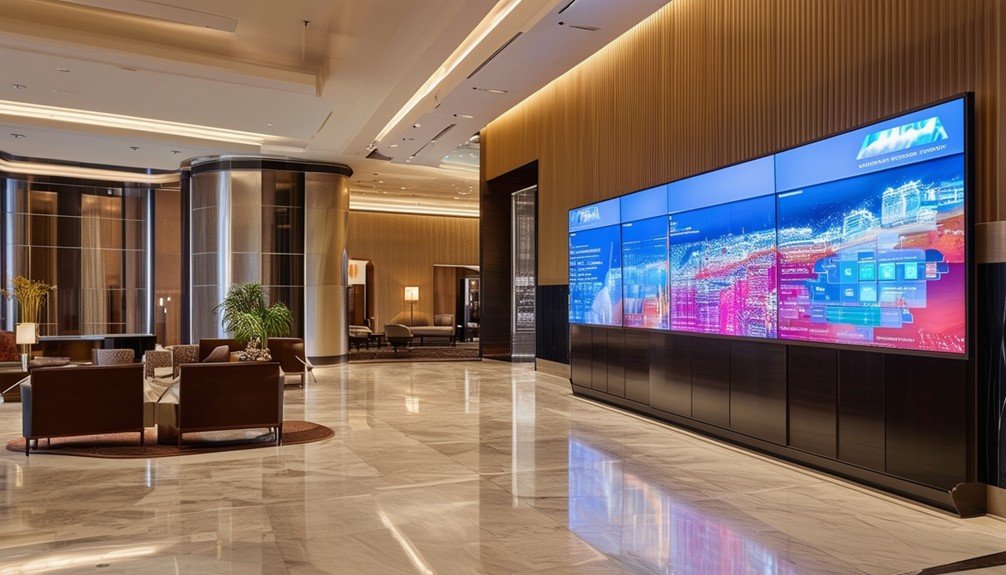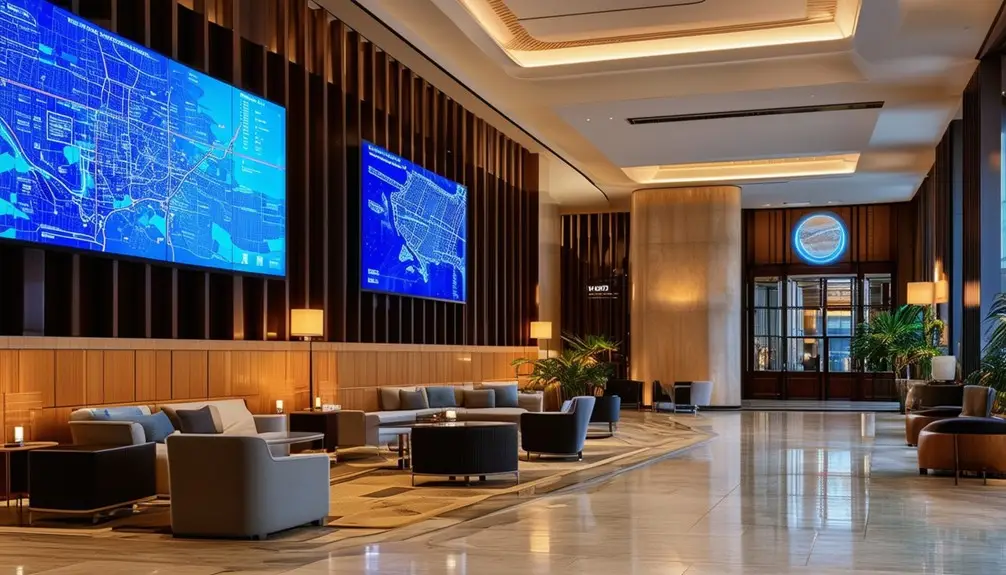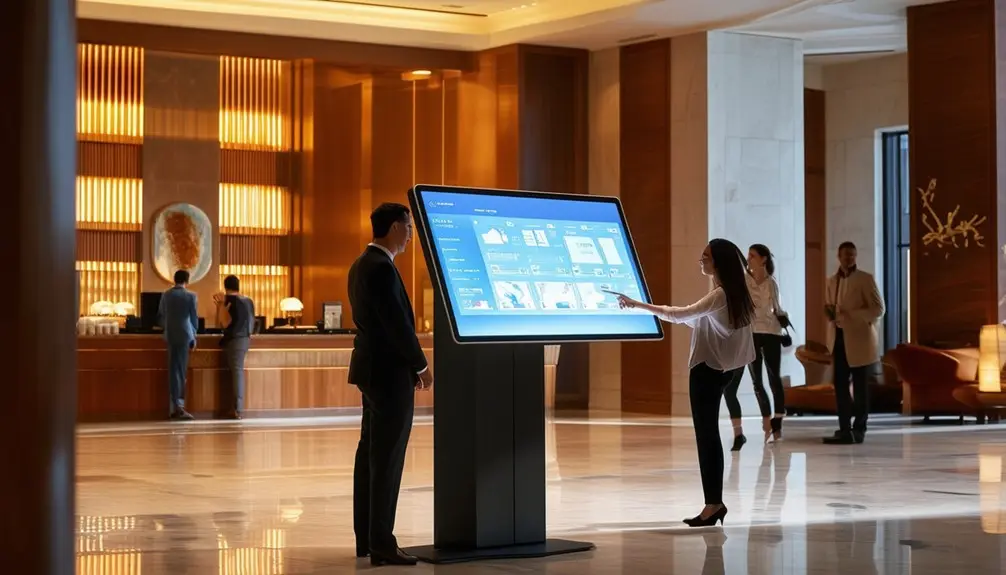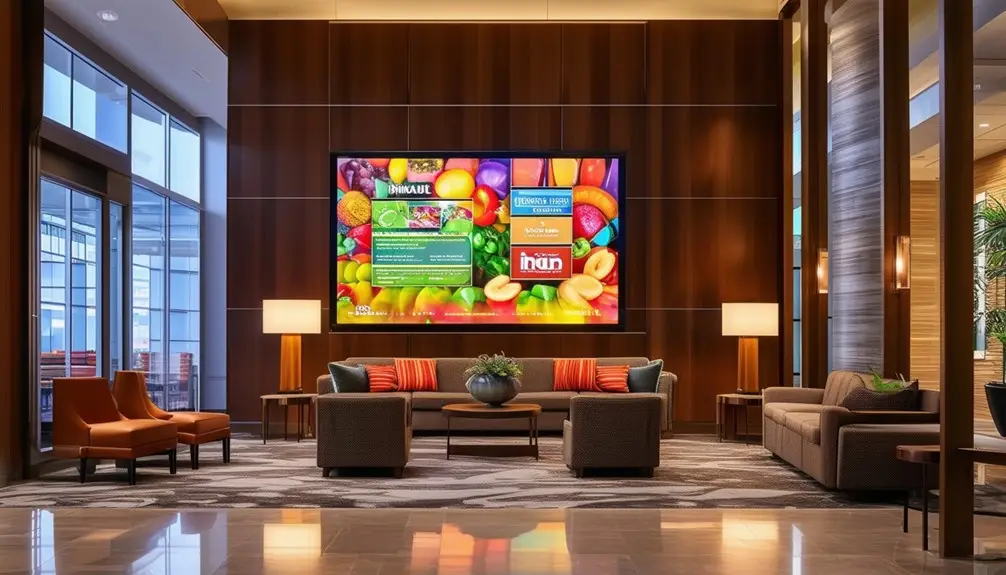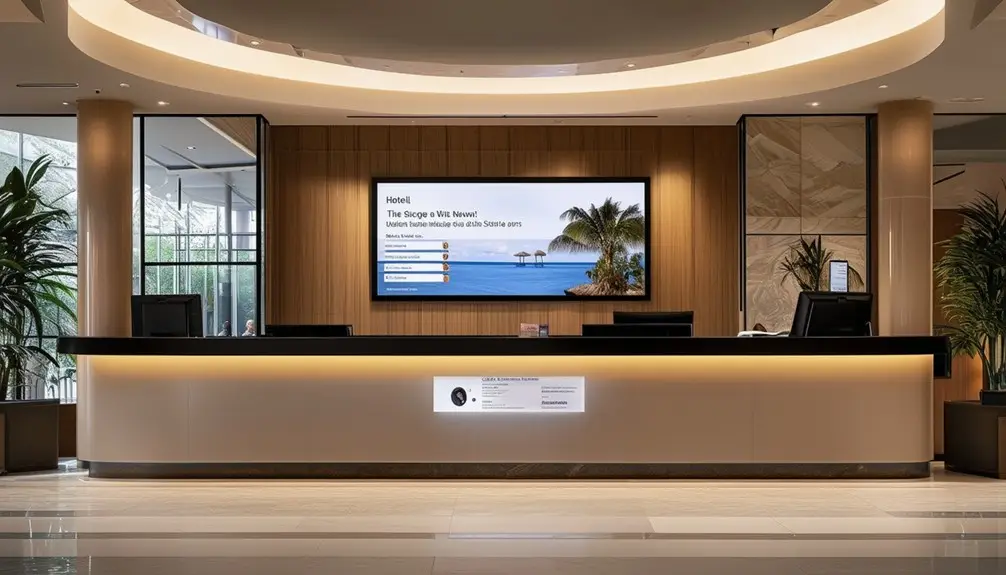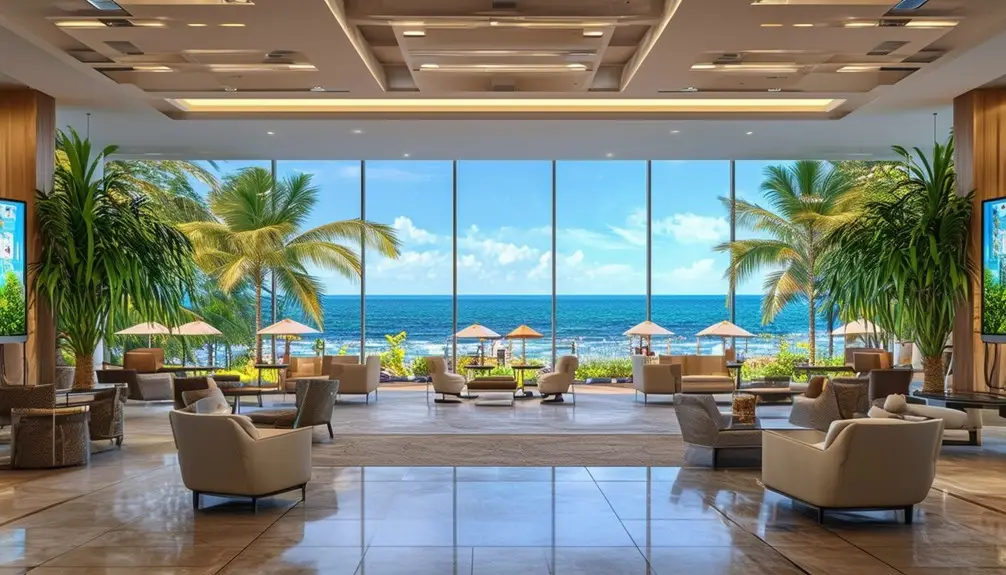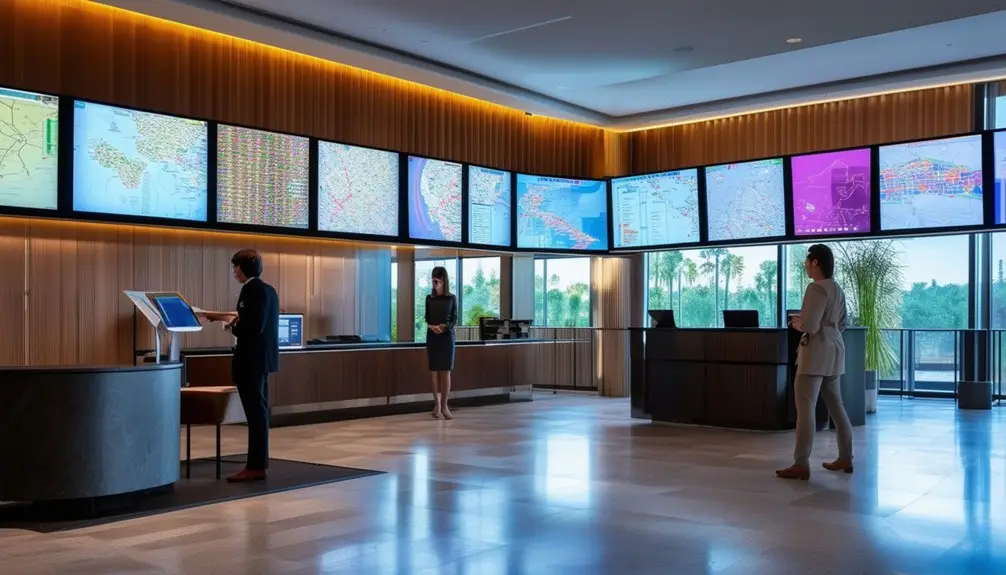Digital signage improves customer experiences in salons and spas. It offers personalized messages, quick updates, and engaging visuals that grab attention and boost sales.
Better client experiences
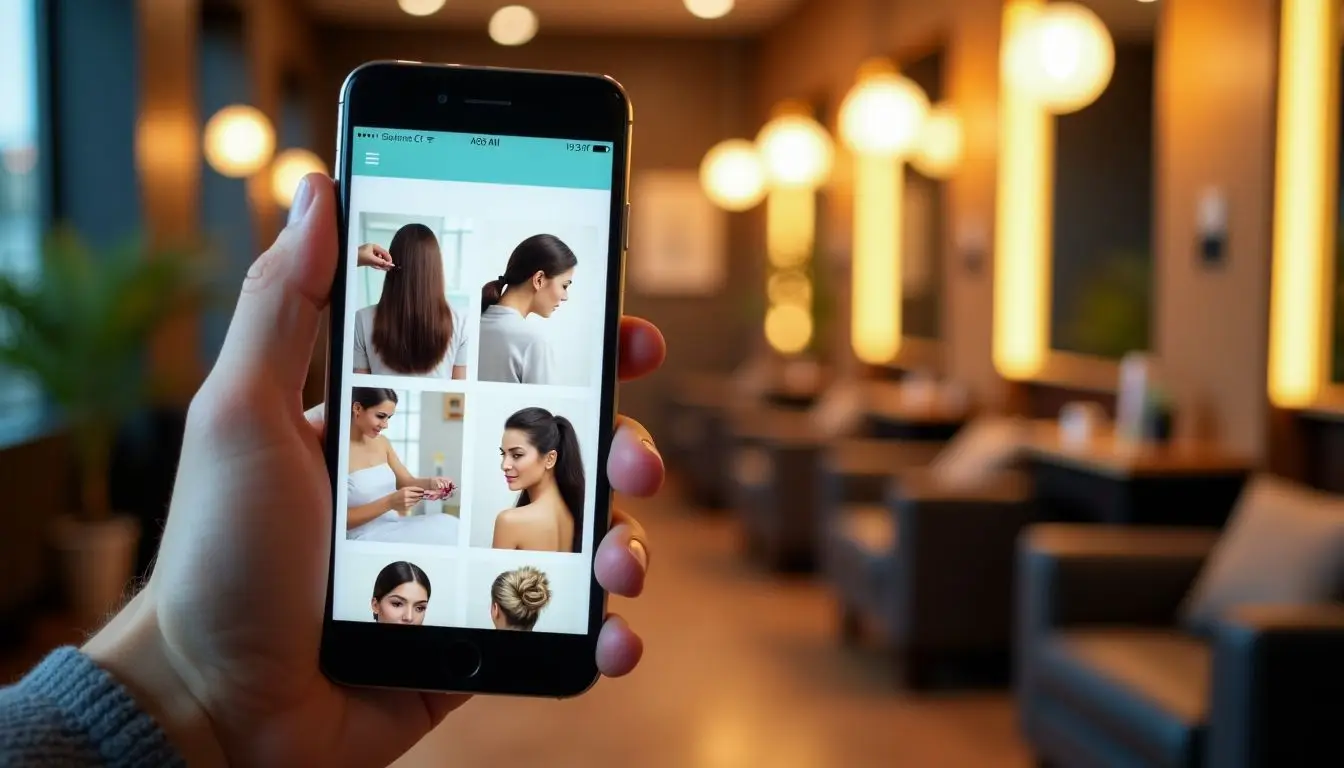
Digital signage can greatly enhance client experiences in salons and spas. With bright visuals, clients stay engaged while they wait for their services. Display screens share exciting information about new products and deals.
This not only informs clients but also makes them feel valued.
Interactive displays allow customers to explore treatments and styles at their own pace. They can see photos of past work and read reviews from other clients. These engaging visuals create a welcoming atmosphere that draws people in.
Salons using this technology often report happier customers who return for more services.
Personalization options

Salons and spas can use digital signage to provide personalization options for clients. This technology lets businesses show tailored messages based on customer preferences. For example, a client may see ads for their favorite hair products or services they often book.
Visual content updates make these displays dynamic and engaging. Clients enjoy an experience that feels unique to them. This type of marketing enhances the customer experience and drives brand promotion.
Every visit becomes more appealing with interactive features like quizzes or polls that suggest new treatments or styles. Personalization increases customer interaction and boosts sales opportunities in salons and spas.
Improved communication
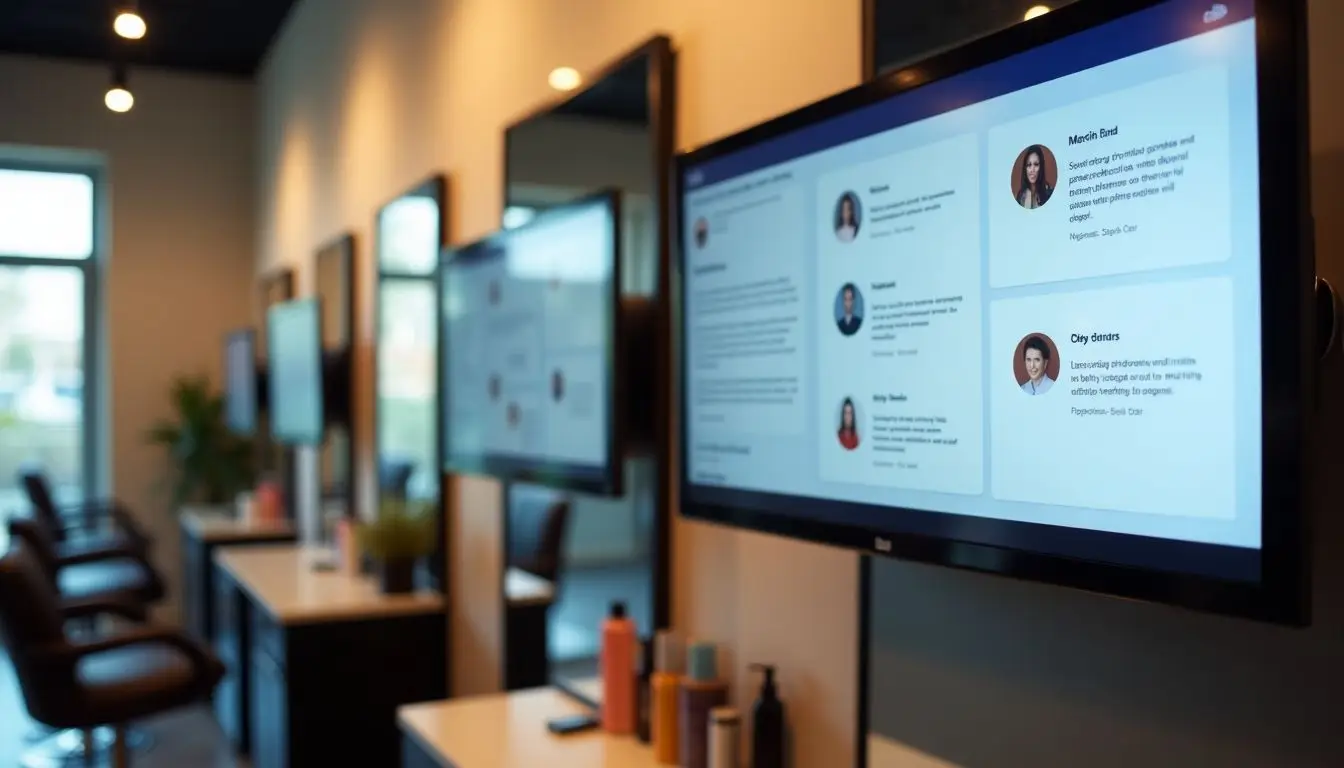
Digital signage greatly enhances communication in salons and spas. Clear visuals share important messages with clients. Menu items, special offers, and service details flash on screens.
This helps customers make quick decisions.
Clients enjoy a more informed visit. They see real-time updates about services or promotions. Digital displays can also show customer testimonials, making the experience personal. Engaging salon displays keep clients connected to social media feeds and reviews too.
Improved communication creates a better customer experience overall, driving engagement and sales in the beauty salon industry.
Increased sales opportunities
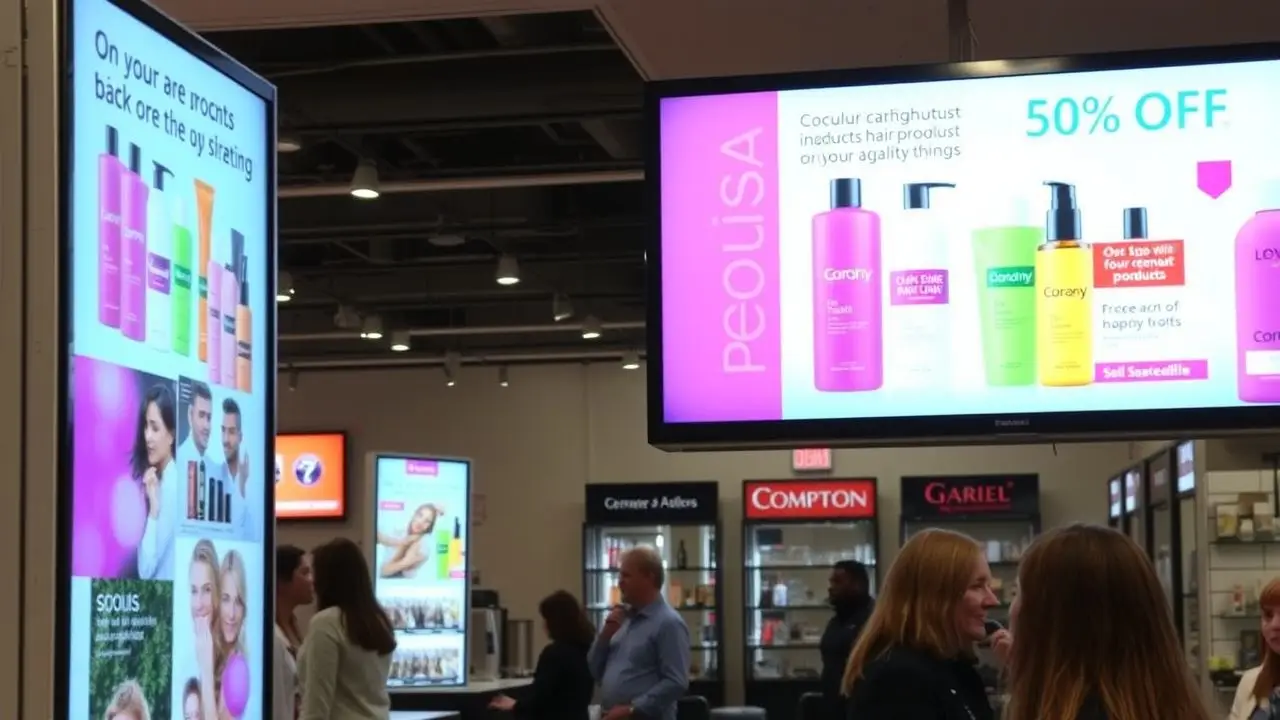
Digital signage can boost sales in salons and spas. These displays show special offers, new products, and services. This catches the eye of clients waiting for their appointments. They see promotions they might not have noticed before.
Many salons use digital screens to highlight popular items. For instance, a hair salon may showcase its best-selling hair care products. Customers can learn about these items while they wait.
First-hand experience shows that this approach leads to more purchases and higher sales numbers. Interactive features also engage customers better, making them more likely to buy services or products right away.
Top Ideas for Using Digital Signage in Hair Salons

Digital signage in hair salons can showcase special offers, highlight new products, and display stunning before-and-after results. This helps attract clients and keep them engaged.
Want to learn more about how digital displays enhance salon experiences?
Sharing information
Sharing information is vital in salons and spas. Digital signage makes it easy to display details about services, pricing, and new trends. Clients can see what treatments are offered right away.
This helps them feel informed and valued.
Interactive screens show social media posts from happy clients too. Seeing real-life transformations builds trust. Touch screen displays let customers browse services at their own pace.
These tools enhance customer engagement and improve the overall client experience in beauty salons.
Showcasing social media
Salons and spas can use digital signage to show their social media. This helps create a lively atmosphere. Displaying posts from platforms like Instagram or Facebook draws attention.
Clients enjoy seeing images of styles and services shared by others.
Social media showcases the salon’s community. It encourages clients to engage online, which boosts loyalty. Sharing real-time updates keeps content fresh and exciting. Timely visuals connect with customers and enhance their experience in the beauty salon industry.
Displaying testimonials
Displaying testimonials is a powerful way to connect with clients in salons and spas. Happy customers share their experiences. This builds trust and shows new clients what to expect.
Digital signage can show these reviews clearly. Using bright visuals makes the testimonials stand out.
Clients enjoy seeing real stories from others. It helps them feel confident about their choices. Many salons use social media feeds for this purpose, showcasing positive comments right on screens.
This type of visual communication boosts client engagement and enhances the overall customer experience in beauty services.
Highlighting products and deals
Digital signage helps salons highlight products and deals effectively. Clear displays catch the eyes of clients as they wait for their services. Screens can showcase new haircare items, skincare lines, or seasonal promotions.
This visual appeal draws attention and keeps customers informed about the latest offerings.
Using digital signage solutions lets spas present special discounts easily. Customers see attractive graphics that show limited-time offers or bundles. These dynamic content updates encourage clients to purchase more in-store.
With interactive screens, guests can explore product details at their own pace and make informed choices during their visit to the salon or spa industry.
Sharing transformations
Sharing transformations can be a great way to attract new clients in salons and spas. Showcasing before-and-after pictures on salon digital displays helps potential customers see what is possible.
These images grab attention and build trust. Many people love seeing real changes in others.
Using interactive displays, you can allow clients to scroll through different styles and services. This keeps them engaged while they wait. Social media feeds can also highlight customer experiences and transformations.
Effective use of visual communication solutions makes the salon look modern and inviting. Showing real results boosts client confidence in your skills and products, leading to increased business success.
Successful Examples of Salon Digital Signage
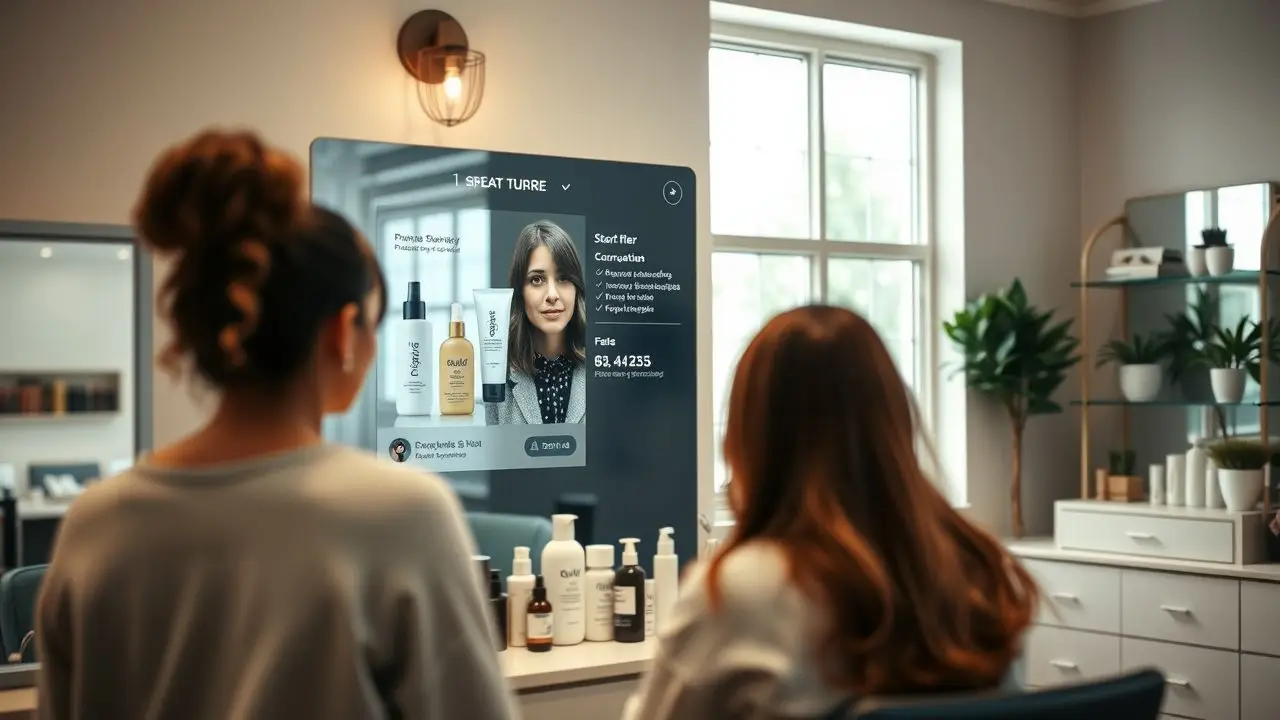
Successful examples of salon digital signage include interactive tutorials and virtual consultations that engage clients. Smart mirrors can show promotions or recommend products based on their needs.
These tools create a more dynamic and exciting experience for customers. Explore how these ideas can boost your salon’s appeal!
Interactive tutorials and product demonstrations
Salons can boost their business with interactive tutorials and product demonstrations. These screens show clients how to use products effectively. Clients can watch styling tips or makeup tricks right in the salon.
This feature enhances the customer experience. It allows guests to see results before they buy products. Many salons use this technology for visual content updates, making them more engaging.
Salons can also showcase before-and-after transformations, which attract more customers.
Virtual consultations and service browsing
Virtual consultations make it easy for clients to connect with salon staff. They can chat about services and ask questions from home. This saves time and helps them feel more comfortable before their visit.
Clients also enjoy browsing service options online. Digital signage displays information clearly, allowing customers to see what each service entails. This enhances the customer experience by providing details on treatments, prices, and available appointments.
With beauty salon technology like this, salons can attract more clients and increase sales opportunities easily.
Personalized recommendations
Personalized recommendations can greatly improve the client experience in salons and spas. Digital signage displays can show services and products that match a customer’s needs. For example, if someone gets a haircut, the screen could suggest hair care products for their style.
These screens use data to make smart suggestions. They gather information based on past visits or popular trends in beauty. This approach helps customers discover new options they might like.
A spa’s interactive screens can offer tailored choices while keeping clients engaged and excited about what they see. Providing these personalized touches makes every visit feel special and keeps customers coming back for more in the salon and spa industry.
Prominently displaying promotions and special offers
Salons and spas can boost sales by displaying promotions and special offers. Digital signage makes this easy. Bright graphics catch the eye. Customers notice deals more quickly than with paper signs.
These screens show current discounts clearly. They can change often, keeping customers interested in new offers. This dynamic instore experience helps salons stand out from the competition.
Clients appreciate quick access to savings while they wait for services. Showing specials on spa interactive screens also enhances customer experience and encourages spending during visits.
Touch screen displays and smart mirrors
Touch screen displays and smart mirrors are changing how salons work. Customers can use these tools to see styles or colors on themselves before making a choice. This technology creates an exciting experience for clients.
Smart mirrors can show product details and tutorials while clients sit in the chair. These features help improve communication between staff and customers. By using eye-catching visuals, salons enhance their beauty salon visual appeal.
Many shops have found that offering such interactive experiences leads to increased sales opportunities.
How to Effectively Use Digital Signage in Salons & Spas

To effectively use digital signage in salons and spas, focus on bright visuals that catch attention and engage clients. This creates a lively atmosphere that keeps customers interested.
Interactive features can enhance their experience even more. Want to learn how these ideas can help your business? Keep reading!
Utilizing eye-catching visuals
Eye-catching visuals grab attention in salons and spas. Bright colors and bold images can make a big impact. They help draw clients to special offers and new products. High-quality pictures of services and results inspire customers to try something new.
Digital signage allows salons to show vibrant displays. These visuals enhance the customer experience. They communicate important information quickly, such as promotions or service details.
Using eye-catching designs helps improve in-store marketing efforts too, leading to increased sales opportunities in the beauty industry.
Incorporating customer testimonials
Customer testimonials are a powerful tool in salons and spas. They build trust with new clients. Happy customers share their experiences on digital signage. This creates a welcoming atmosphere for others.
Using these testimonials helps improve the customer experience enhancement. Clients feel more confident about trying services. Displaying positive feedback also boosts sales opportunities.
Trust grows when potential clients see real results from satisfied customers.
Offering exclusive promotions
Exclusive promotions attract more customers to salons and spas. Digital signage helps display these deals clearly. Bright colors and bold text catch the eye. Clients can quickly see what services are on sale.
These offers create excitement around visiting a salon or spa. Using digital marketing boosts awareness of special discounts. When clients know about exclusive promotions, they are likely to book appointments sooner, leading to increased sales opportunities for businesses in the beauty industry.
Using social media integration
Many salons and spas use social media integration for marketing. It helps them connect with clients in real-time. Salons can showcase their latest styles and services on digital screens.
They can also display posts from happy customers. This creates trust and encourages new clients to visit.
Clients often share their experiences online. By showing these posts, salons highlight their popularity. Social media feeds keep the content fresh and engaging. Using this tool enhances communication within the beauty industry, boosting customer interaction and sales opportunities at the same time.
Engaging customers with interactive features
Interactive features can make salons and spas more fun. Touch screens let clients choose services easily. They can explore treatments or browse products right at their fingertips. This helps customers feel in control of their choices.
Using digital signage for polls and quizzes is a great idea too. It engages clients while they wait. They might even win discounts or freebies! These fun interactions keep people entertained and happy, boosting sales opportunities in the beauty industry.
FAQs
1. How is digital signage transforming salons and spas?
Digital signage is changing the beauty industry by offering new ways for advertising solutions, improving in-store marketing, and enhancing gym and spa communication.
2. What benefits does technology bring to the beauty industry?
Technology like digital signage brings a lot of retail trends into play in salons & spas. It enhances instore marketing strategies, increases customer engagement and offers effective advertising solutions.
3. How does digital signage improve gym and spa communication?
Digital Signage provides up-to-date information about services or promotions in gyms and spas. This improves communication by keeping customers informed about what’s happening inside the salon or spa.
4. Can you give an example of how digital signage helps with instore marketing?
Sure! Digital Signage can display promotional videos or images that highlight special offers or new treatments available at the salon or spa, making it an effective tool for instore marketing.
